Jamaica is home to a wide variety of birds, with more than 200 species recorded on the island. From the vibrant and colorful hummingbirds to the majestic frigate birds, Jamaica’s birds are a delight to observe and enjoy.
Whether you’re a bird-watcher or simply someone who appreciates the beauty of nature, Jamaica’s birds are sure to bring a smile to your face.
1. Red-Billed Streamertail
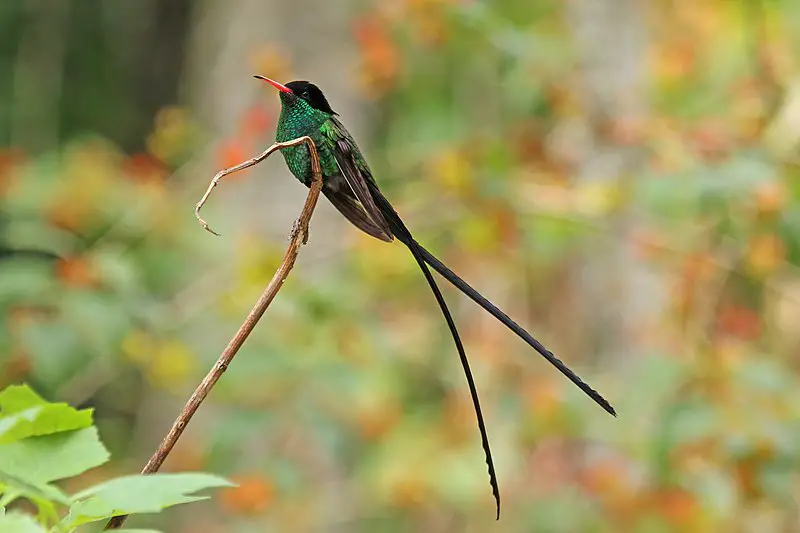
The red-billed streamertail, also known as the doctor bird, scissor-tail or scissors tail hummingbird is a species of hummingbird native to Jamaica. It serves as the country’s national bird and was formally described by Swedish naturalist Carl Linnaeus in 1758.
This colorful little creature has long tail feathers with black center stripes that can be flicked like scissor blades when it flies.
Its head and breast are iridescent green while its back is grayish blue. The wings have white tips on their outer edges which create an eye catching effect when flying at high speeds.
Its diet mainly consists of small insects such as gnats, mosquitoes and spiders supplemented occasionally with nectar from flowers including lantana and wild banana blossoms.
Weighing just 3g (0.11oz), this tiny but vibrant species stands out amongst Jamaica’s avian population.
Scientific classification:
| Kingdom | Animalia |
| Phylum | Chordata |
| Class | Aves |
| Order | Apodiformes |
| Family | Trochilidae |
| Genus | Trochilus |
| Species | T. polytmus |
2. Jamaican Tody
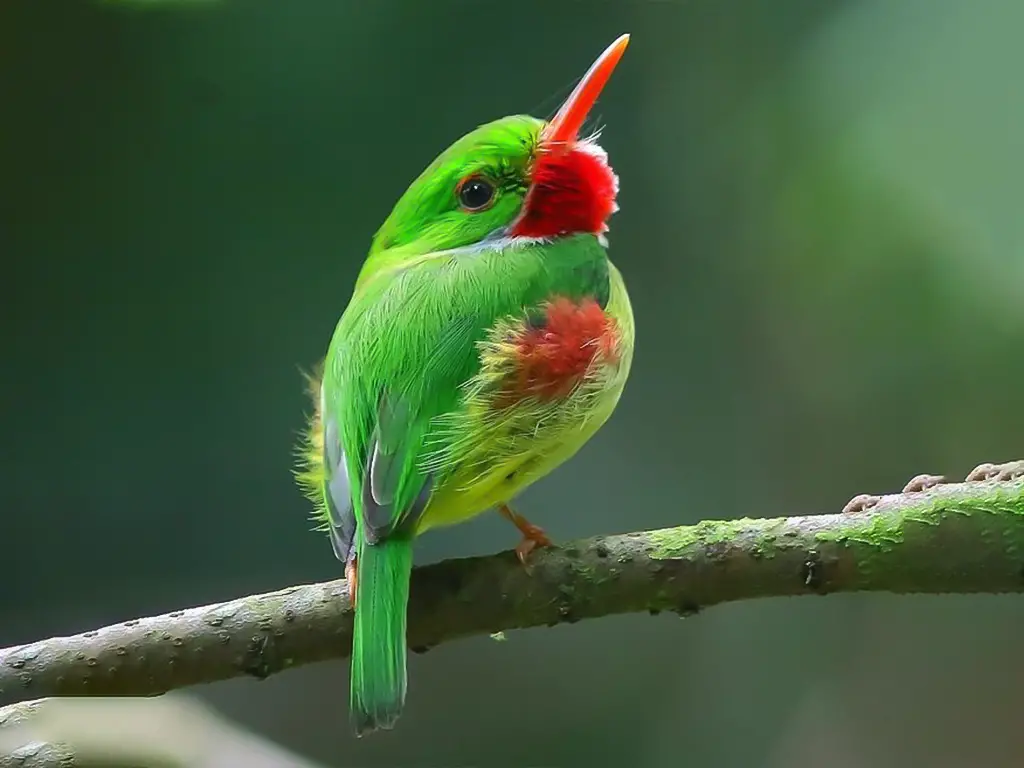
The Jamaican tody is an endemic bird of Jamaica. It has a bright yellow-green body and red throat patch, with a black crown on its head that extends down to the nape of its neck.
Its wings are short and rounded, while it’s tail is long and pointed.
The diet consists mainly of insects such as beetles, caterpillars, grasshoppers which they catch by hovering in midair over their prey before diving swiftly towards them.
They also consume small amounts of fruit when available during certain times throughout the year.
These tiny birds typically breed between April and October each year where pairs make shallow saucer shaped nests out of plant material close to ground level or low trees near water sources such as streams or rivers for easy access to food sources for both parents and chicks alike.
3. Jamaican Woodpecker
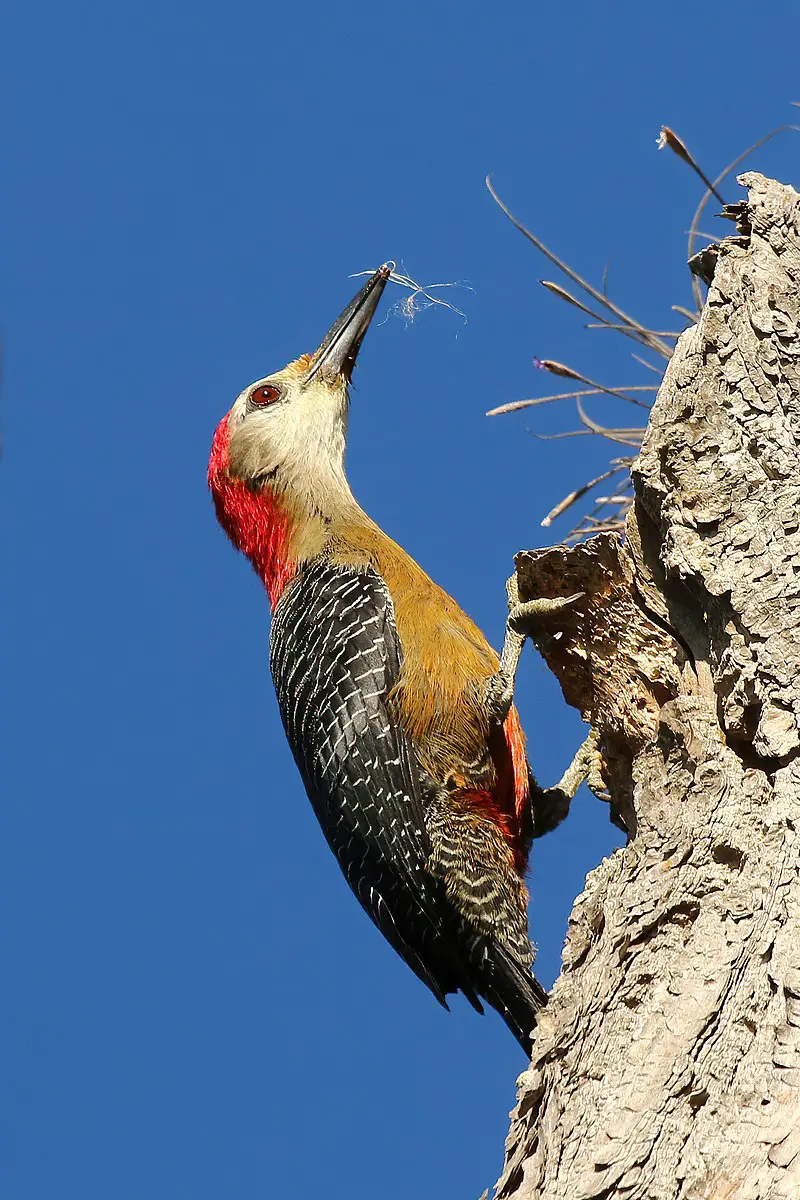
The Jamaican woodpecker is a vibrant and beautiful bird found only in Jamaica. It measures between 10-11 inches long, with its head split into two distinct colors; the top of the head and neck are brilliant red while the rest of it is white.
The mantle, back and wings have black feathers that contrast against yellowish spots on either side.
Its tail has alternating bars of black and white making for an unforgettable sight when flapping away from danger or searching for food in trees.
This species is known to inhabit both undisturbed forests as well as heavily degraded former forest areas where they feed mainly on insects such as ants, beetles and caterpillars – typically by pecking at bark or probing dead wood with their beaks or feet.
A truly unique creature indeed.
Scientific classification:
| Kingdom | Animalia |
| Phylum | Chordata |
| Class | Aves |
| Order | Piciformes |
| Family | Picidae |
| Genus | Melanerpes |
| Species | M. radiolatus |
4. Jamaican Becard
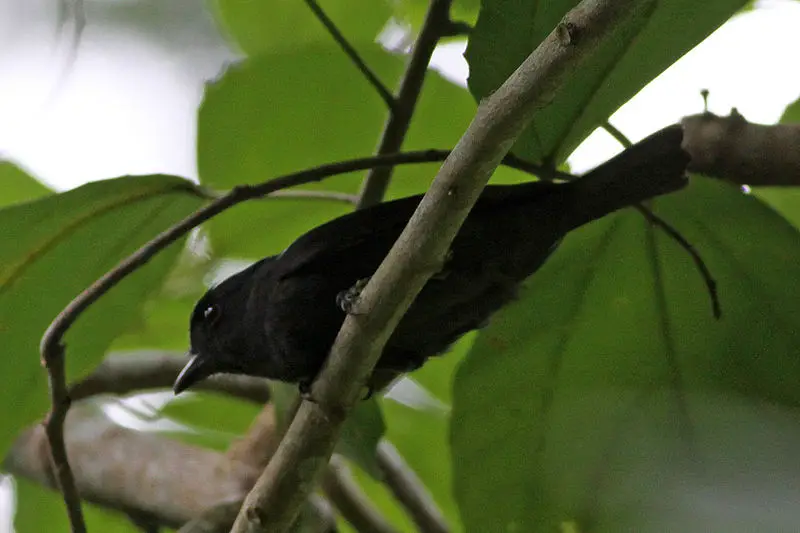
The Jamaican becard is a species of bird endemic to Jamaica, belonging to the family Tityridae. The tropical forests of this island nation provide its natural habitat; both moist lowland and montane areas are home for these birds.
They have black or dark gray plumage, with white markings on tail feathers and wings. Their bright yellow eyes stand out against their rather dull coloring – making them easy to spot in their native environment.
In addition to being beautiful creatures, they also play an important role in maintaining local ecosystems by eating fruit and seeds as well as insects like beetles and caterpillars.
This helps keep insect populations under control while also providing food sources for other animals that share the same habitats.
To ensure future generations can enjoy watching these amazing birds, conservation efforts must remain high so that their numbers stay stable despite threats such as deforestation and pollution from human activities.
Scientific classification:
| Kingdom | Animalia |
| Phylum | Chordata |
| Class | Aves |
| Order | Passeriformes |
| Family | Tityridae |
| Genus | Pachyramphus |
| Species | P. niger |
5. Streamertail
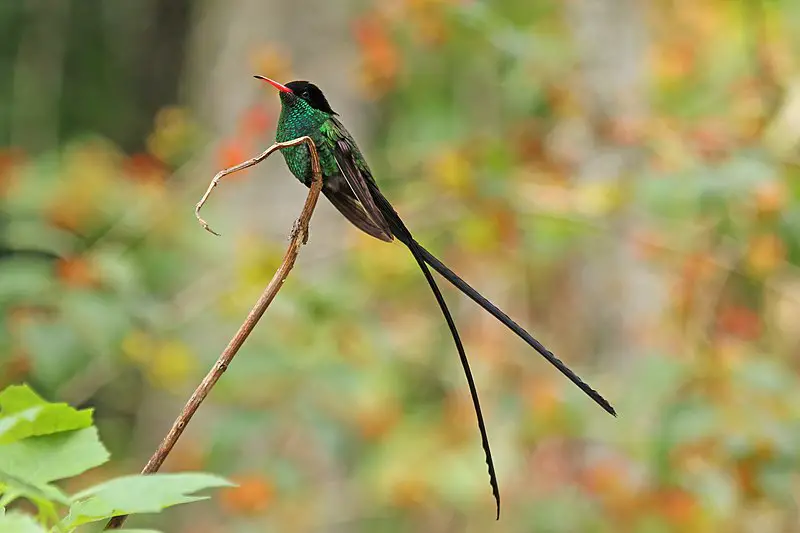
The Streamertail is a vibrant hummingbird that can be found exclusively on the beautiful island of Jamaica. This species belongs to the genus Trochilus and family Trochilidae, and has two subspecies: T.polytmus scitulus and T. polytmus polythmus.
It boasts an array of common names including “Doctor Bird” thanks to its long tail feathers resembling doctors’ coats.
The male’s plumage ranges from iridescent green-blues with black tips with white stripes running along their flanks while females have duller brownish-green underparts marked by chestnut streaks on their sides.
These birds feed mainly off nectar but may also eat small insects such as spiders or moths for extra protein in times when food resources are scarce during migration season.
Scientific classification:
| Kingdom | Animalia |
| Phylum | Chordata |
| Class | Aves |
| Order | Apodiformes |
| Family | Trochilidae |
| Tribe | Trochilini |
| Genus | Trochilus Linnaeus, 1758 |
6. Crested Quail-Dove
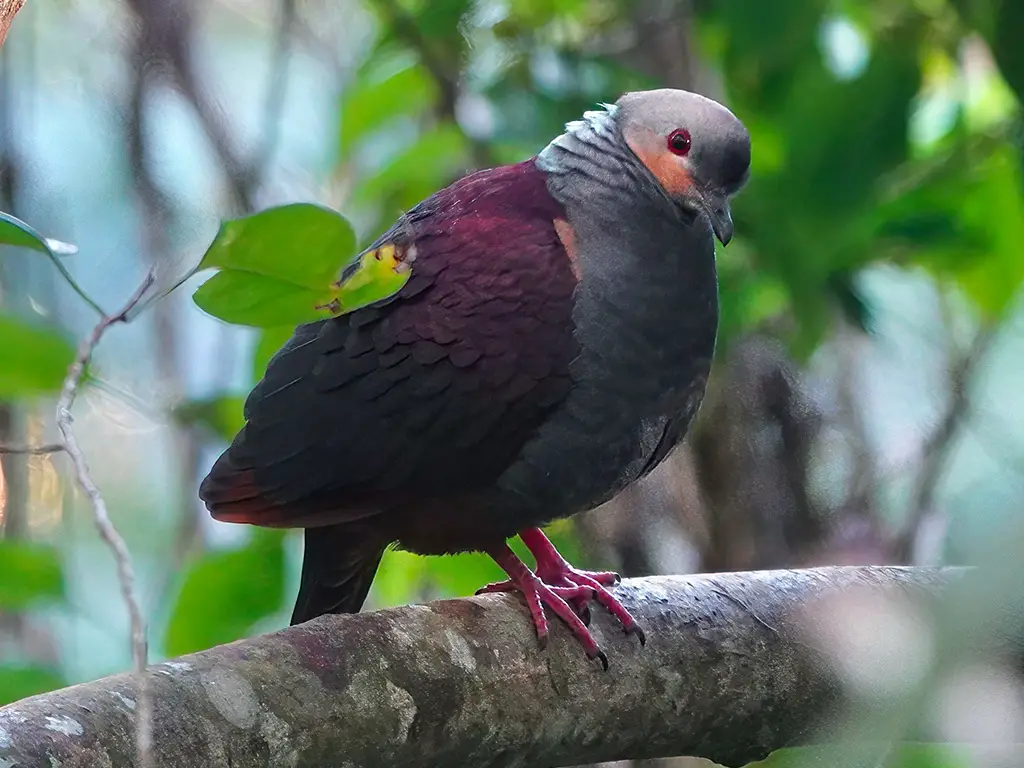
The Crested Quail-Dove is a species of bird belonging to the family Columbidae, and it is endemic to Jamaica.
It was once the only member in its genus Geotrygon, with other recently added members being formerly part of another related genus called Oreopeleia.
Males measure 27 to 31 cm long while females are slightly smaller at 25–27 cm.
The males have grey backs and wings, which contrast their lighter underparts that can range from light yellowish browns up close to white further down near their tails.
Their heads are darker than their bodies featuring small crests on both sides above each eye giving them an attractive appearance.
They feed mainly on fruits found in trees around open forests as well as insects when available during certain times of year or periods of drought.
Scientific classification:
| Kingdom | Animalia |
| Phylum | Chordata |
| Class | Aves |
| Order | Columbiformes |
| Family | Columbidae |
| Genus | Geotrygon |
| Species | G. versicolor |
7. Arrowhead Warbler
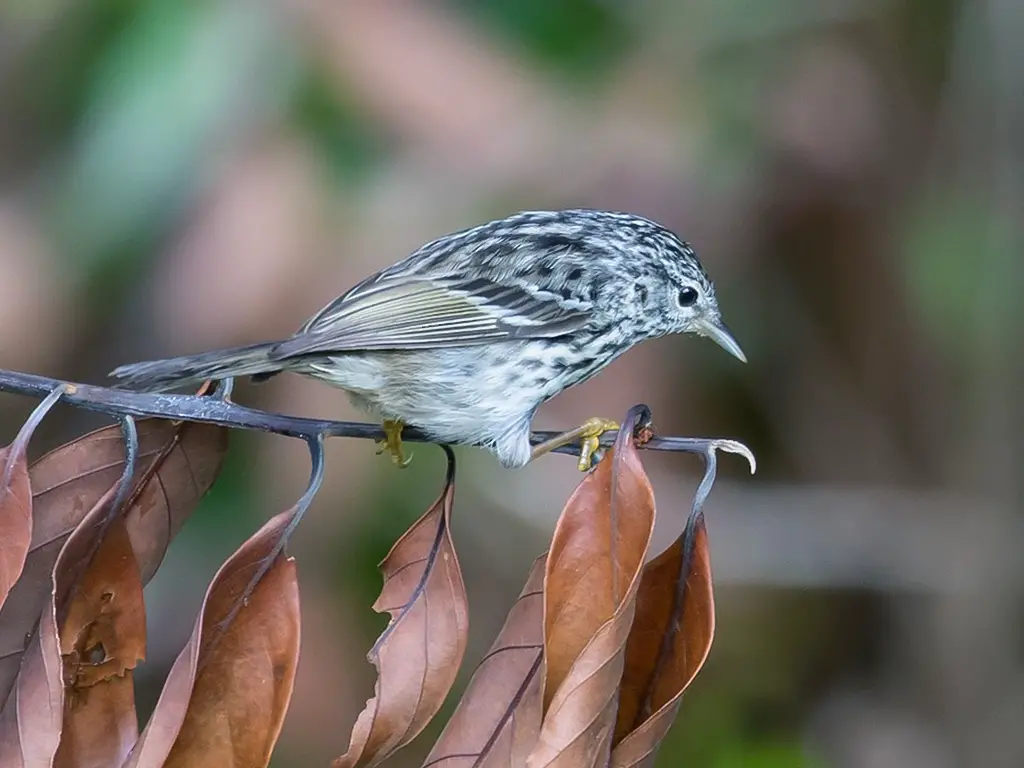
The arrowhead warbler is a beautiful bird belonging to the family Parulidae. It can be found only in Jamaica, where it inhabits subtropical or tropical moist montane forests.
The species has striking plumage with distinctive yellowish-green upperparts and white underparts that are speckled in black.
Its head features an interesting pattern of dark stripes on its face and crown along with two bright yellow spots resembling arrows pointing towards its forehead.
Although not much research has been done about this species due to its limited distribution, it appears to forage mainly for insects among dense vegetation which forms part of its habitat requirements.
Overall, the arrowhead warbler is a captivating avian native to Jamaica that deserves more attention from researchers as well as conservationists alike.
Scientific classification:
| Kingdom | Animalia |
| Phylum | Chordata |
| Class | Aves |
| Order | Passeriformes |
| Family | Parulidae |
| Genus | Setophaga |
| Species | S. pharetra |
8. Yellow-Billed Amazon
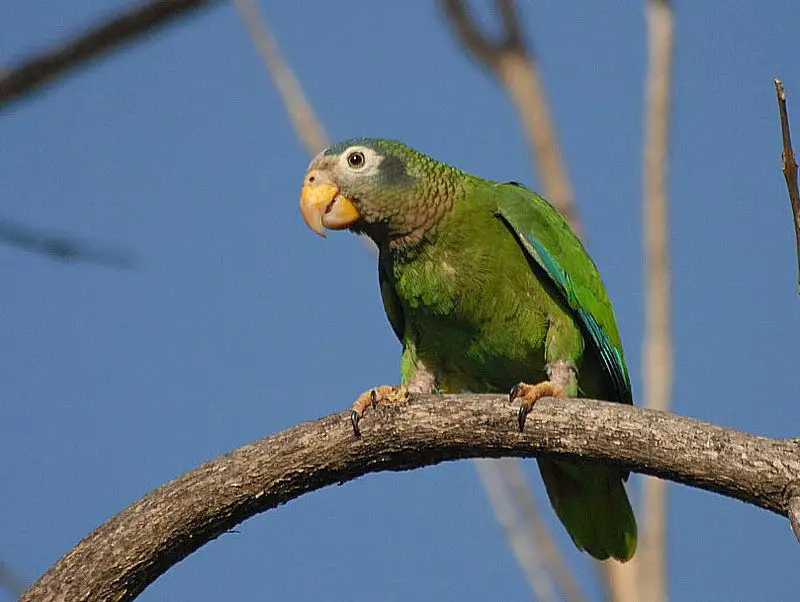
The Yellow-billed Amazon is a stunning parrot native to Jamaica. It has bright green feathers, with a pink neck and throat that adds to its beauty. Its tail is short compared to other Amazons, giving it an endearing look.
This bird lives in lowland forests as well as mangrove forests and tropical moist areas of the island nation.
It usually feeds on fruits from trees or shrubs found in these habitats but will also eat insects like beetles, wasps and caterpillars when available.
The yellow-billed amazon’s presence serves an important purpose for the ecosystem by helping spread seeds through their droppings which helps promote new vegetation growth throughout its range area.
Scientific classification:
| Kingdom | Animalia |
| Phylum | Chordata |
| Class | Aves |
| Order | Psittaciformes |
| Family | Psittacidae |
| Genus | Amazona |
| Species | A. collaria |
9. Jamaican Mango
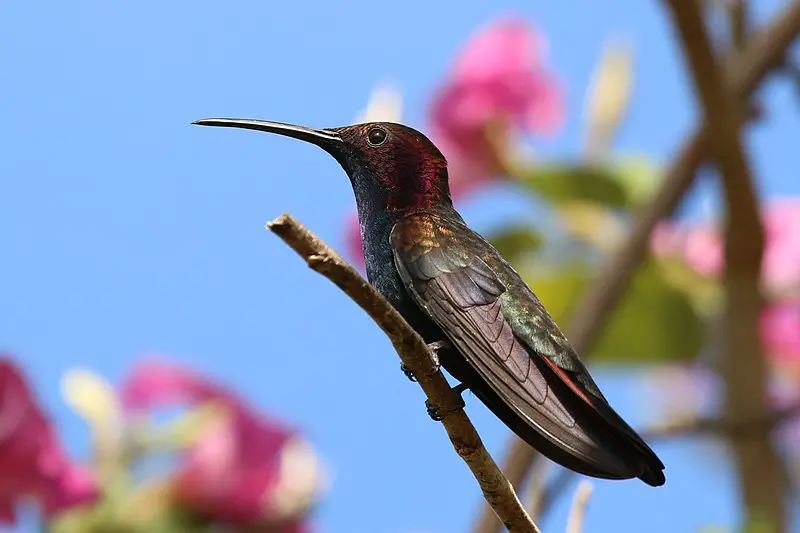
The Jamaican mango is a species of hummingbird that can only be found in Jamaica. It was first described by Swedish naturalist Carl Linnaeus in 1758 and given the binomial name Trochilus mango, based on an illustration of the “Mango bird” from earlier descriptions.
This small bird has bright green upperparts with grey-blue underparts and white tips to its tail feathers. Its diet consists mainly of nectar, supplemented by some invertebrates it catches while hovering at flowers or bushes for food.
The Jamaican Mango plays an important role as pollinator for local plants, aiding their reproduction so they may continue providing essential resources like food and habitat to other wildlife living there too.
Scientific classification:
| Kingdom | Animalia |
| Phylum | Chordata |
| Class | Aves |
| Order | Apodiformes |
| Family | Trochilidae |
| Genus | Anthracothorax |
| Species | A. mango |
10. Black-Billed Amazon
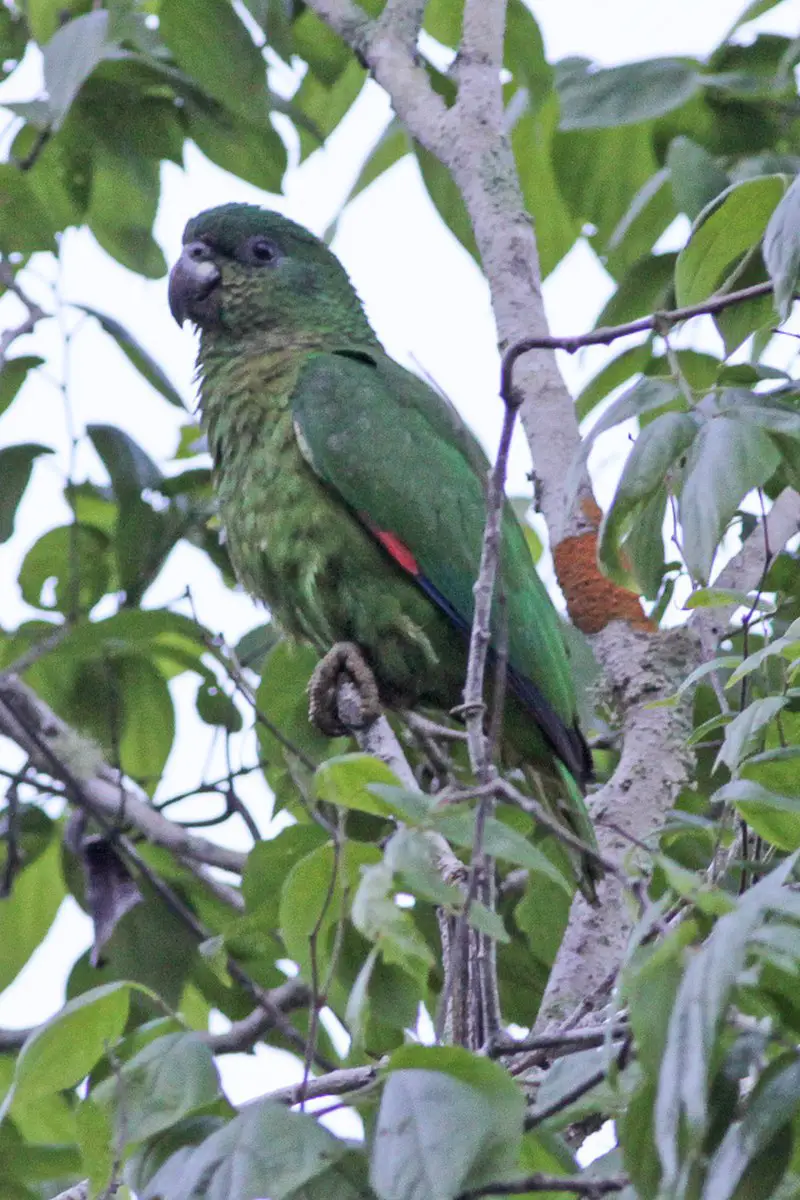
The Black-billed Amazon is a small, green parrot which can only be found in Jamaica. It stands out from other Amazons due to its black bill and red patches on the wings.
In addition, it has some flecks of color around the head area. Measuring at 25 cm (10 inches), this bird is considered one of the smallest members in the Amazon parrot family.
Although similar to Yellow-billed Amazons that also inhabit Jamaica, these two birds are easily distinguished by their bills alone – yellow for one species and black for another.
The Black-billed Amazon makes its home mainly within forests but can sometimes be spotted near woodlands or savannas as well. They communicate with each other through loud shrieks during flight or while perched on trees .
Scientific classification:
| Kingdom | Animalia |
| Phylum | Chordata |
| Class | Aves |
| Order | Psittaciformes |
| Family | Psittacidae |
| Genus | Amazona |
| Species | A. agilis |
11. White-Chinned Thrush
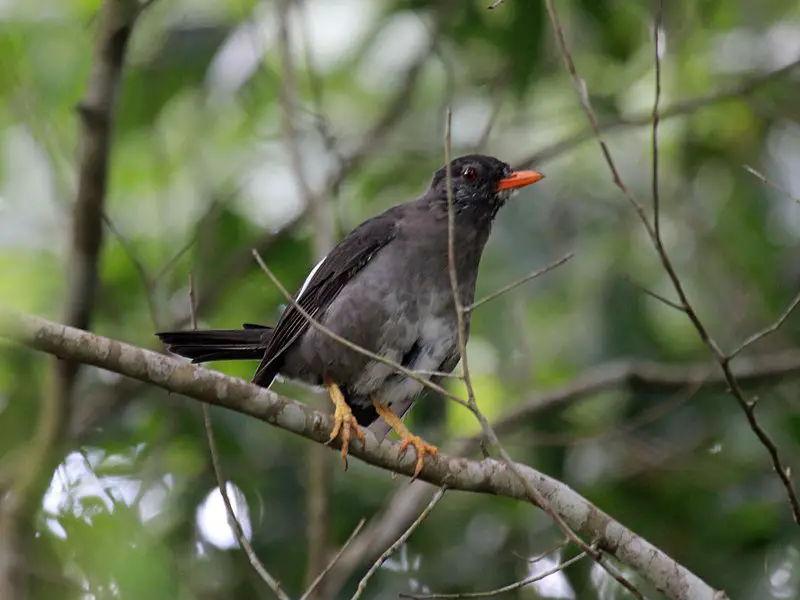
The White-chinned Thrush is an attractive bird species primarily found in Jamaica. Its plumage includes a white chin, brownish upperparts and light reddish underparts that make it stand out from other thrushes.
It inhabits subtropical or tropical moist lowland forests, montane forests as well as degraded former forest areas.
The diet of the White-chinned Thrush consists mainly of fruits and insects which they forage on the ground or glean from foliage while searching for food among leaf litter.
They are usually seen alone or in pairs but may form small flocks during migration periods.
With its distinctive voice and impressive beauty, this charming little bird will no doubt be appreciated by nature lovers across Jamaica.
Scientific classification:
| Kingdom | Animalia |
| Phylum | Chordata |
| Class | Aves |
| Order | Passeriformes |
| Family | Turdidae |
| Genus | Turdus |
| Species | T. aurantius |
12. Rufous-Tailed Flycatcher
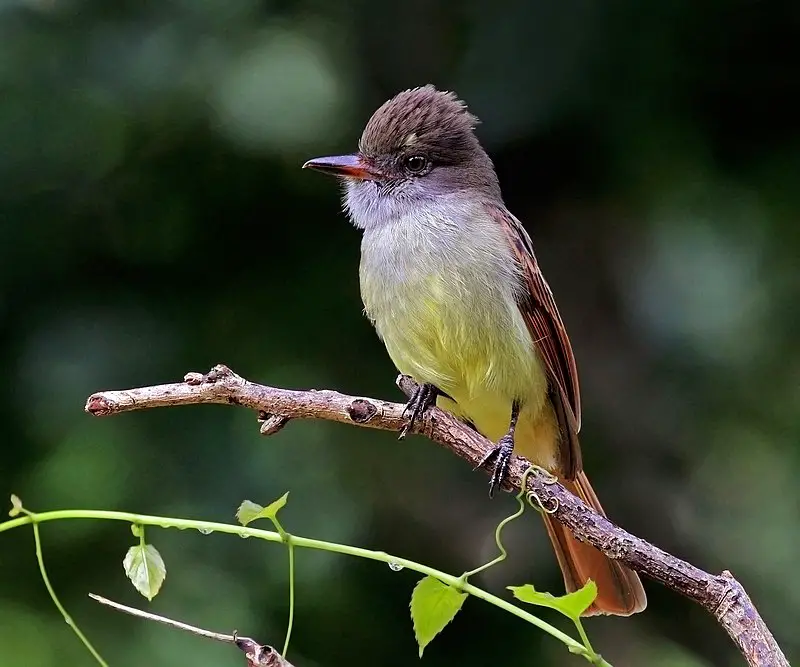
The Rufous-tailed Flycatcher is an impressive species of bird found in Jamaica. It has a distinctive rufous tail, giving it its name.
This beautiful avian prefers to live in subtropical and tropical lowland forests, as well as montane forests and degraded former forest habitats.
The flycatcher feeds on insects such as flies, beetles, moths, wasps and caterpillars that they catch while flying or hovering midair.
They also enjoy eating small fruits like berries when available too. When not feeding the birds are often seen perching atop branches for long periods of time looking out for potential prey items to swoop down upon at any moment.
With its bright colors and entertaining hunting techniques this species is certainly one worth observing if you ever get the chance to do so.
Scientific classification:
| Kingdom | Animalia |
| Phylum | Chordata |
| Class | Aves |
| Order | Passeriformes |
| Family | Tyrannidae |
| Genus | Myiarchus |
| Species | M. validus |
13. Jamaican Spindalis
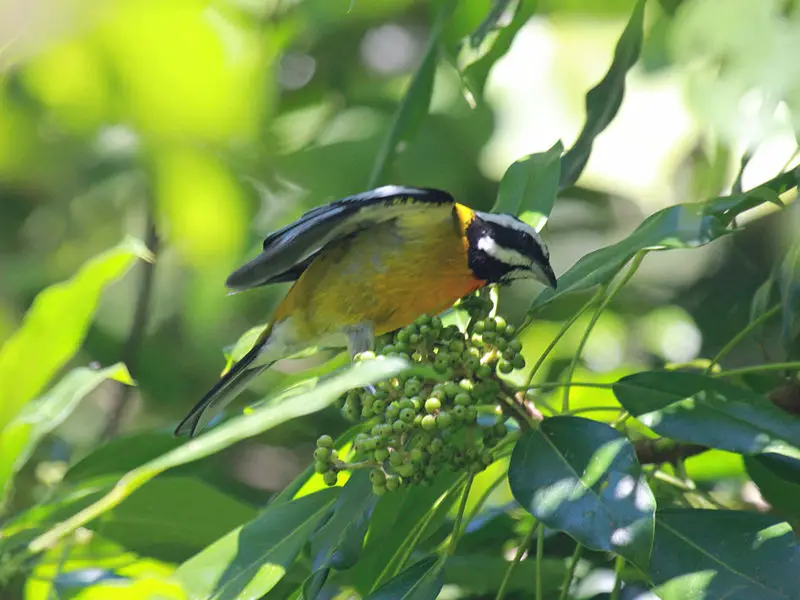
The Jamaican Spindalis is an endemic bird species to the island nation of Jamaica. It belongs to the family Spindalidae and historically was a single polytypic species known as Stripe-headed Tanager.
In 1997, molecular phylogenetic studies revealed that this genus should be split into four different distinct species: Striped Headed tanager, Bahama Yellowthroat, White-chinned Thrush and Jamaican spindalis.
The latter has olive green upperparts with black wings and tail feathers which are tipped in white giving it its characteristic look.
Its underparts consist of yellowish or whitish colouration while its head features narrow vertical stripes on either side; hence its name stripe headed tanager.
As far as behaviour goes they typically feed on fruits in shrubs or trees but have also been observed foraging on ground too.
Scientific classification:
| Kingdom | Animalia |
| Phylum | Chordata |
| Class | Aves |
| Order | Passeriformes |
| Family | Spindalidae |
| Genus | Spindalis |
| Species | S. nigricephala |
14. Blue Mountain Vireo
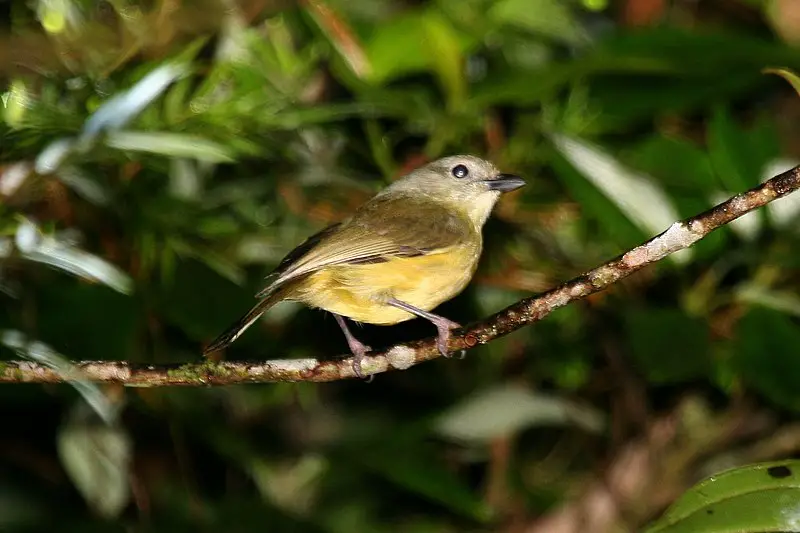
The Blue Mountain vireo is a species of bird found only in Jamaica. It inhabits subtropical and tropical forests, plantations, as well as heavily degraded former forests.
Unfortunately this beautiful creature faces the danger of losing its natural habitat due to human activities such deforestation, agriculture expansion and urbanization.
This makes it more vulnerable to extinction if urgent conservation actions are not taken soon enough.
The government must enforce policy measures that will ensure these birds’ habitats remain protected so they can keep surviving for generations to come.
We should also do our part by reducing our carbon footprint so we don’t contribute further destruction on their environment through climate change effects like rising temperatures or increased frequency of extreme weather events.
Scientific classification:
| Kingdom | Animalia |
| Phylum | Chordata |
| Class | Aves |
| Order | Passeriformes |
| Family | Vireonidae |
| Genus | Vireo |
| Species | V. osburni |
15. Jamaican Euphonia
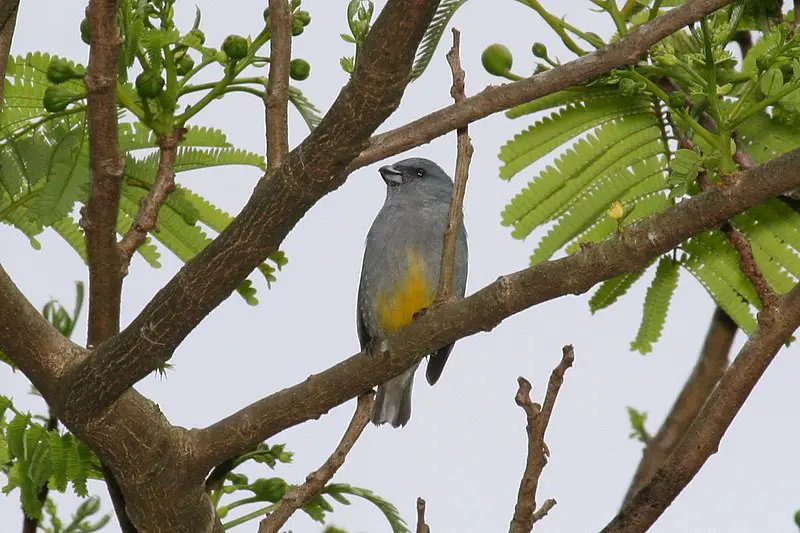
The Jamaican euphonia is an endemic bird found exclusively in Jamaica. It belongs to the family Fringillidae and its natural habitats are moist lowland forests, as well as heavily degraded former forests.
The species has a very attractive plumage with colors ranging from yellow-green to red on its head, neck and breast; while shades of blue adorn the wings and tail feathers.
Its bill is black with a white tip making it stand out among other birds similar in size.
The diet of this small passerine consists mostly of fruits but also insects which it forages for at tree canopies or shrubs near water sources like streams or rivers.
Although there isn’t much data about its population numbers, conservation efforts have been made by local organizations such as BirdLife International, who work towards protecting threatened species like the Jamaican Euphonia from human disturbances that could further reduce their habitat area resulting in severe population declines or even extinction.
Scientific classification:
| Kingdom | Animalia |
| Phylum | Chordata |
| Class | Aves |
| Order | Passeriformes |
| Family | Fringillidae |
| Subfamily | Euphoniinae |
| Genus | Euphonia |
| Species | E. jamaica |
16. White-Eyed Thrush
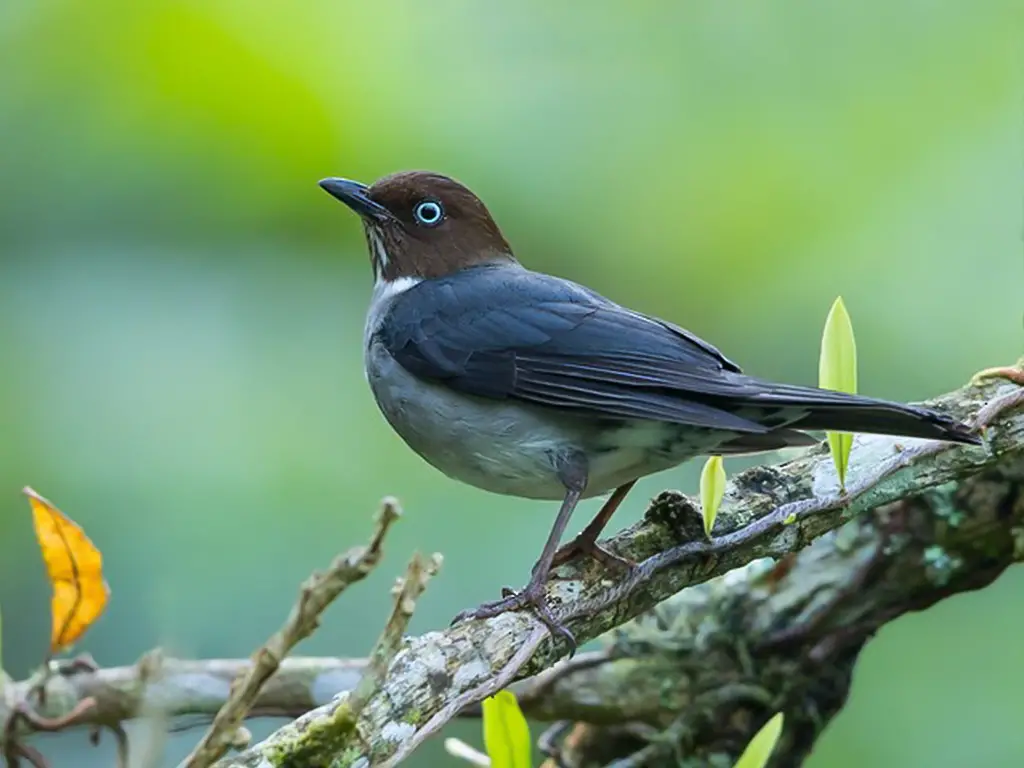
The White-eyed Thrush is a species of bird found in Jamaica. This small songbird has white eyes, brown plumage and black wings with white spots on them.
It inhabits lowland forests as well as montane forests and formerly forested areas that have been degraded. It feeds mainly on fruits, insects and other invertebrates which it finds by foraging close to the ground or among shrubs.
The thrush’s bright call makes it easier to locate when searching its habitat for food or nesting materials.
As an important part of the Jamaican ecosystem, this unique species plays a vital role in controlling insect populations while also providing beauty to our environment through its colouration and vocalizations.
Scientific classification:
| Kingdom | Animalia |
| Phylum | Chordata |
| Class | Aves |
| Order | Passeriformes |
| Family | Turdidae |
| Genus | Turdus |
| Species | T. jamaicensis |
17. Black-Billed Streamertail
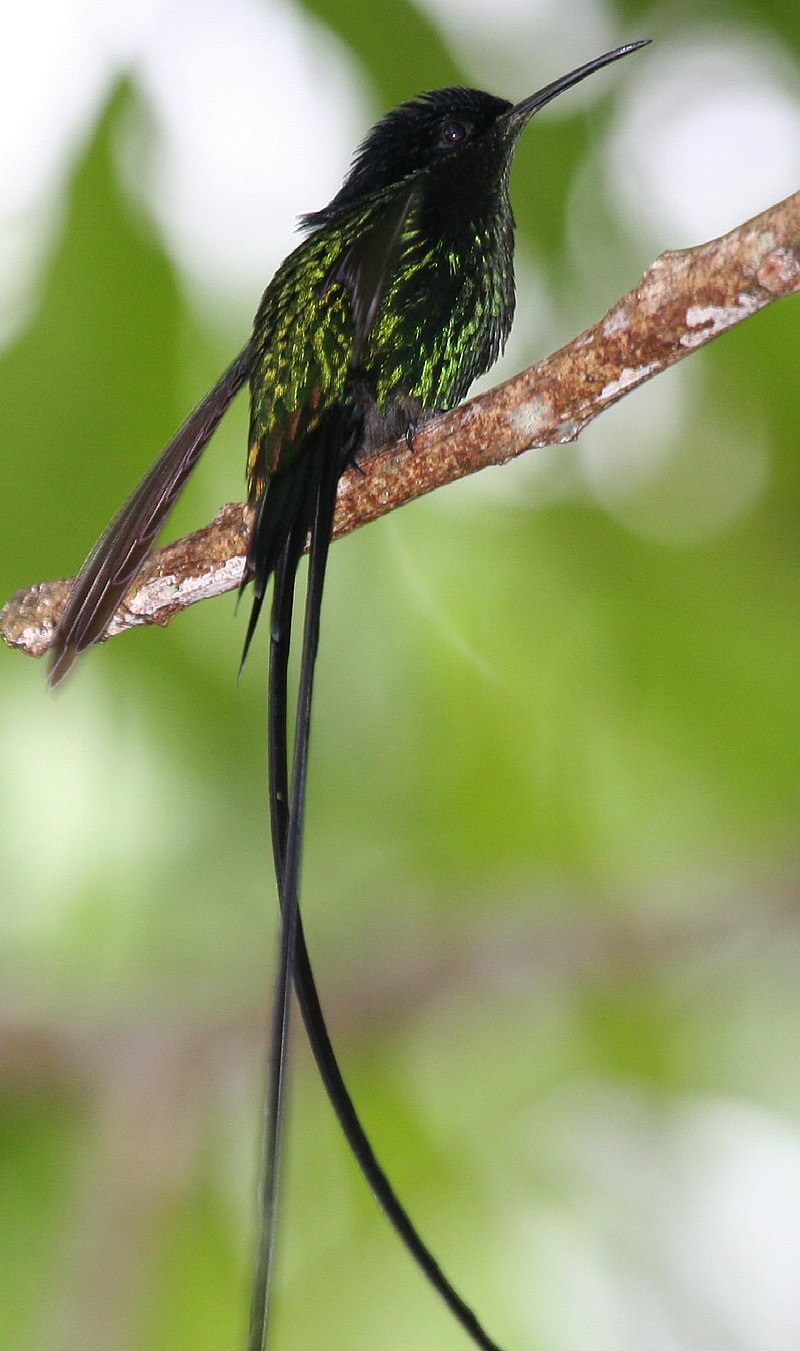
The black-billed streamertail is a species of hummingbird, belonging to the emeralds tribe Trochilini. Endemic to eastern Jamaica, it is easily distinguishable from its red-billed counterpart due to its unique black bill.
Measuring at around 9 cm long, this small bird has iridescent green feathers on top and buffy white underneath with tail plumes that can reach up 15cm in length.
Its diet consists mainly of nectar but they also feed on flies or spiders found near flowers.
This beautiful creature spends most of its time hovering over areas filled with lush vegetation as it flaps their wings rapidly like other hummingbirds do when searching for food – an amazing sight.
Scientific classification:
| Kingdom | Animalia |
| Phylum | Chordata |
| Class | Aves |
| Order | Apodiformes |
| Family | Trochilidae |
| Genus | Trochilus |
| Species | T. scitulus |
18. Ring-Tailed Pigeon
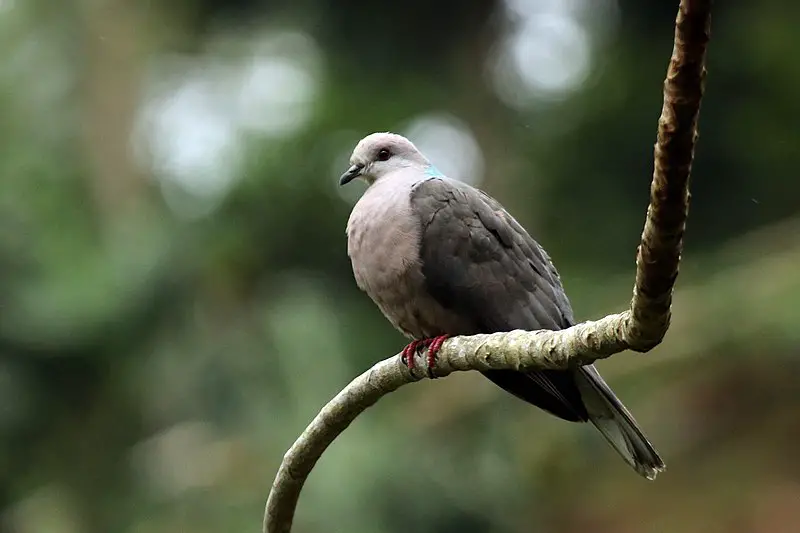
The Ring-tailed Pigeon is a beautiful species of bird endemic to Jamaica. It’s monotypic, and along with the Chilean pigeon and Band-tailed pigeon may form a superspecies.
The male can grow up to 48.5 cm while females are typically 38 to 43 cm long, boasting blueish green feathers – highlighted by black markings on their wings – white chests and bellies, iridescent bronze heads and tails with an unmistakable ring of white dots around its tail end.
They feed primarily on fruits found in trees but also consume small insects occasionally when available.
With conservation efforts ongoing it’s hoped that this wonderful species will enjoy many years ahead in its native land.
Scientific classification:
| Kingdom | Animalia |
| Phylum | Chordata |
| Class | Aves |
| Order | Columbiformes |
| Family | Columbidae |
| Genus | Patagioenas |
| Species | P. caribaea |
19. Jamaican Elaenia
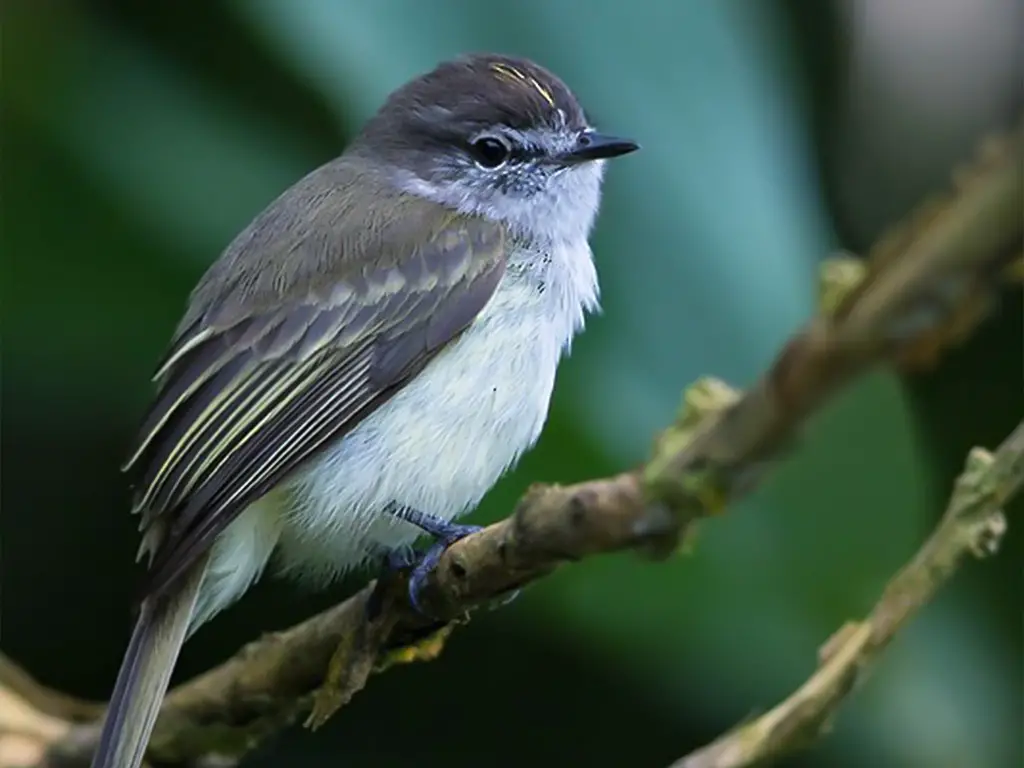
The Jamaican elaenia is a small bird endemic to Jamaica. It has a green plumage, measuring 12-13 cm from bill to tail and weighing 11.5–13 g.
Its natural habitats are subtropical or tropical moist lowland forests, montane forests and degraded former forest sites.
This species can be found in the northern part of the island as well as on some off shore islands like Morant Cays and Pedro Bank.
The diet of this bird consists mainly of insects but it also feeds on fruits occasionally during non-breeding seasons.
They live in pairs or family groups which make loud calls throughout their range while they look for food together in trees or bushes near riversides or other water sources.
Conservation efforts are needed to ensure that this beautiful species continues living happily in its native habitat.
Scientific classification:
| Kingdom | Animalia |
| Phylum | Chordata |
| Class | Aves |
| Order | Passeriformes |
| Family | Tyrannidae |
| Genus | Myiopagis |
| Species | M. cotta |
20. Yellow-Shouldered Grassquit
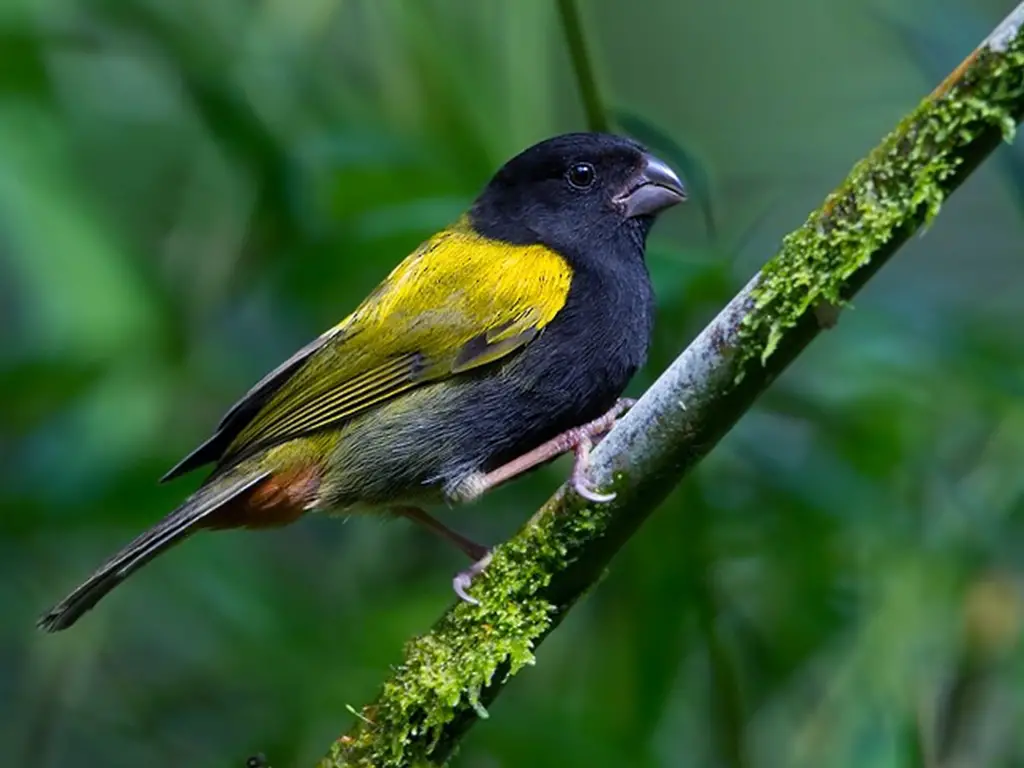
The Yellow-shouldered Grassquit is a species of bird endemic to Jamaica. It belongs to the tanager family Thraupidae, and is the only member in its genus Loxipasser.
This small songbird inhabits subtropical or tropical lowland forests as well as montane forests; it has also adapted to heavily degraded former forest habitats.
First described in 1844, this grassquits’ plumage consists of yellowish shoulder patches on an olive green body with black wings and tail feathers – giving them their distinctive appearance.
They are often seen hopping around trees searching for insects among foliage while singing melodic notes during mating season.
Scientific classification:
| Kingdom | Animalia |
| Phylum | Chordata |
| Class | Aves |
| Order | Passeriformes |
| Family | Thraupidae |
| Genus | Loxipasser Bryant, 1866 |
| Species | L. anoxanthus |
21. Sad Flycatcher
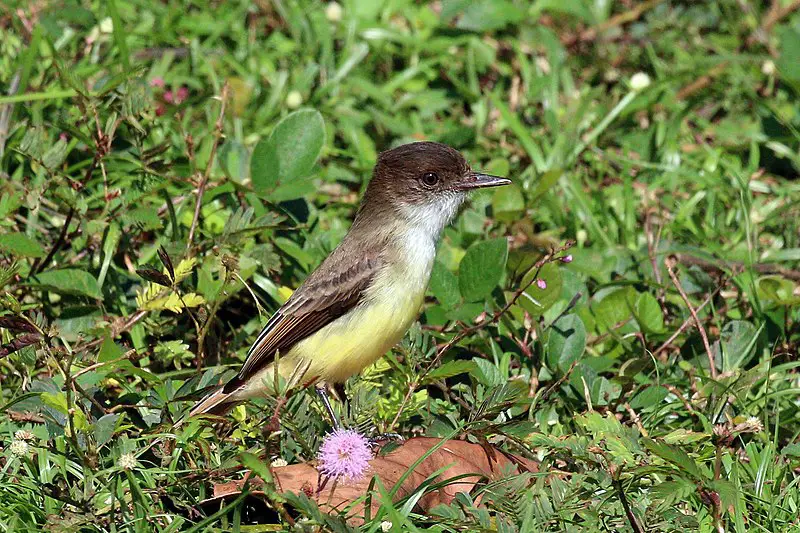
The Sad Flycatcher is a species of bird found in Jamaica. It belongs to the family Tyrannidae and has adapted to live in subtropical or tropical moist lowland forests, as well as heavily degraded former forest areas.
This small-sized dark grey bird features distinctive eye rings that are bright yellow on males and white for females. The wingspan measures from 15–17 cm (6–7 inches) with a length of 18 cm (7 inches).
Its diet consists mainly of insects which it catches by flying out from its perch before quickly returning back again; this behavior gives rise to its name “Sad Flycatcher”.
They build their nests near the ground, often close to water sources such as streams or rivers – making them particularly vulnerable during times of severe drought when these resources become scarce.
Overall, they are highly social birds who form large flocks when not breeding season.
Scientific classification:
| Kingdom | Animalia |
| Phylum | Chordata |
| Class | Aves |
| Order | Passeriformes |
| Family | Tyrannidae |
| Genus | Myiarchus |
| Species | M. barbirostris |
22. Jamaican Vireo
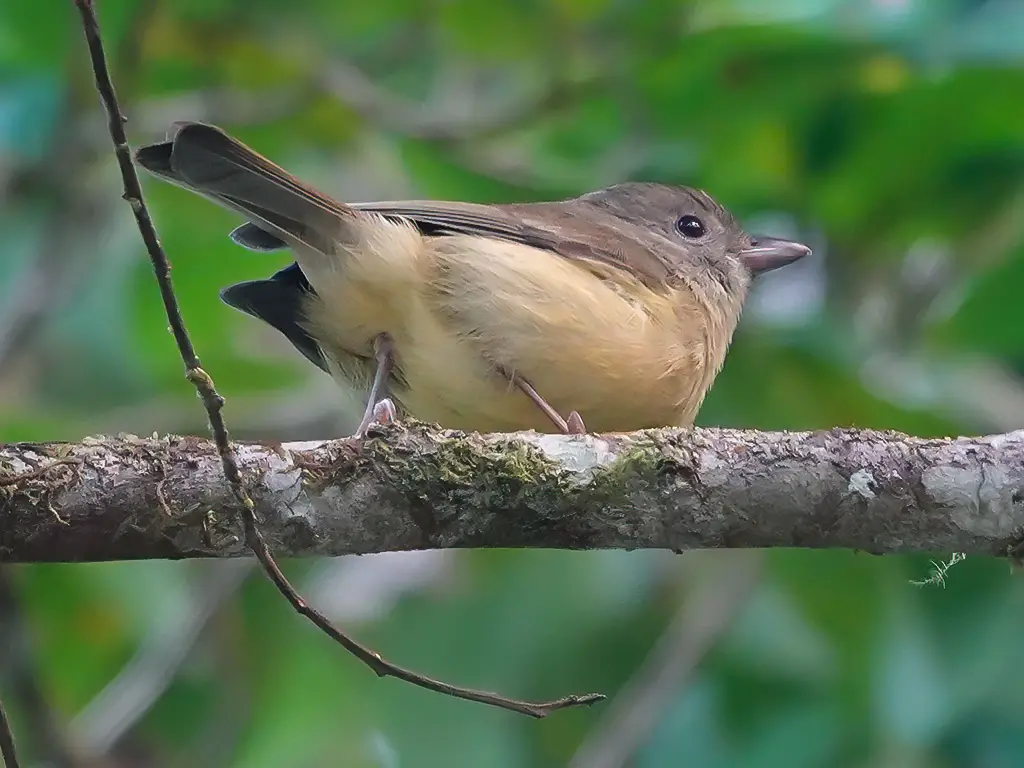
The Jamaican vireo is an endemic species of bird that inhabits the island of Jamaica. This small songbird belongs to the family Vireonidae, and can be found in dry or moist lowland forests as well as montane forests.
It has also been spotted in heavily degraded former forest areas. The Jamaican vireo measures up to 17 cm long, with a wingspan ranging from 22-24 cm.
Its plumage consists mainly of shades of green, brown and yellow; its head features bright white stripes on either side while its breast displays bold black streaks running along it lengthwise.
Despite being quite common throughout much of its range, this species is threatened by habitat loss due to deforestation activities taking place within their natural habitats on the Caribbean island nation.
Scientific classification:
| Kingdom | Animalia |
| Phylum | Chordata |
| Class | Aves |
| Order | Passeriformes |
| Family | Vireonidae |
| Genus | Vireo |
| Species | V. modestus |
23. Jamaican Pewee
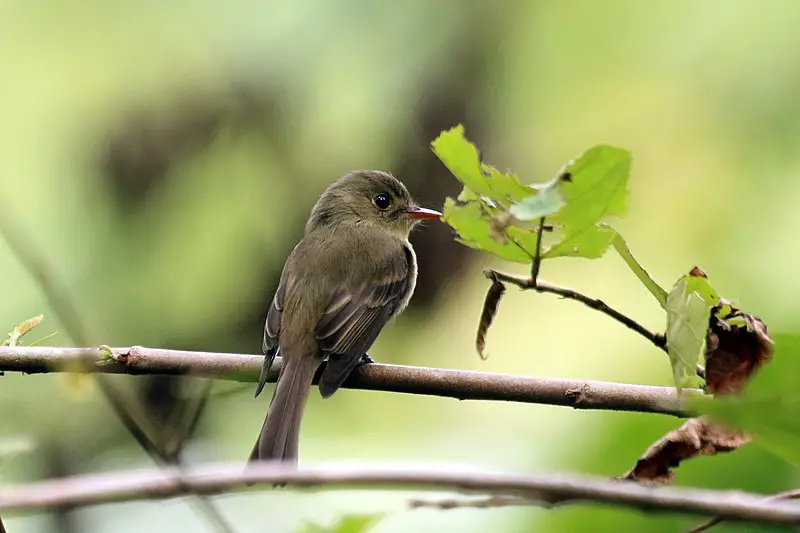
The Jamaican pewee is a species of bird belonging to the family Tyrannidae. It was first described by Philip Henry Gosse in 1847 and is endemic to Jamaica, although it used to be seen as conspecific with the Cuban pewee and Hispaniola pewee.
The adult birds have pale grey-brown upperparts, darker wings and tail, an orange crown stripe which fades into white on their forehead, whitish underparts with narrow dark streaks on their breast area and yellow legs.
They are often found perching atop trees or flying low over open areas hunting for small insects such as grasshoppers or beetles that they catch mid-air.
Additionally they make soft “chee” calls during flight displaying courtship behaviour among themselves from time to time too.
Scientific classification:
| Kingdom | Animalia |
| Phylum | Chordata |
| Class | Aves |
| Order | Passeriformes |
| Family | Tyrannidae |
| Genus | Contopus |
| Species | C. pallidus |
24. Jamaican Crow
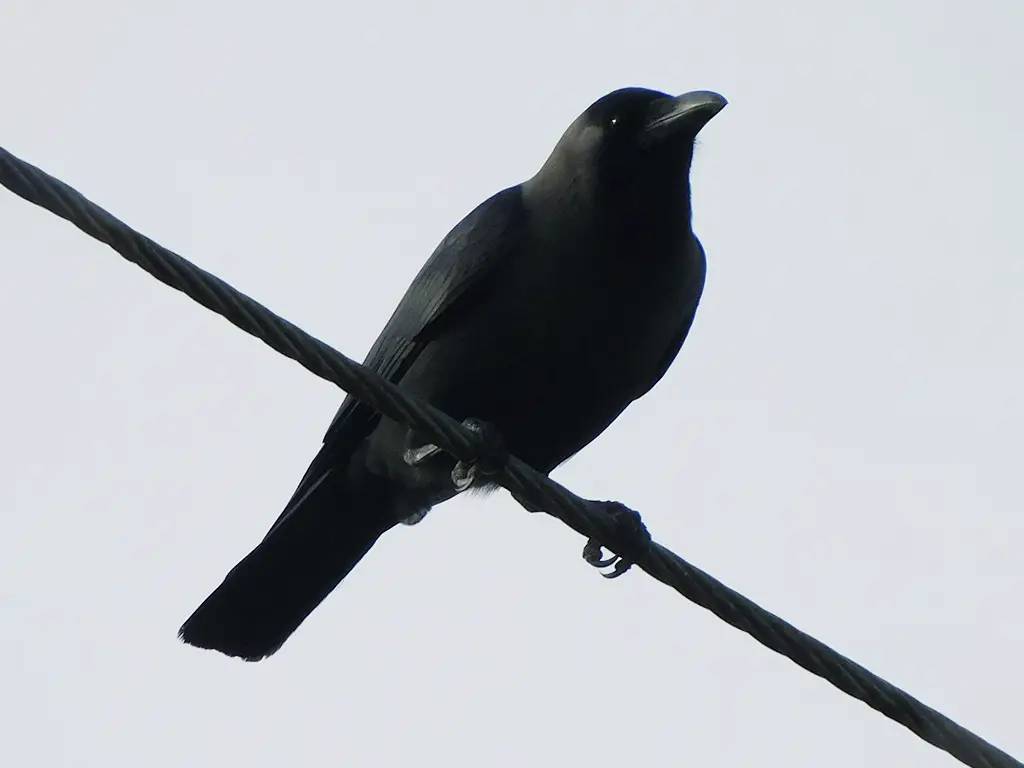
The Jamaican crow is a small and distinctive species of bird native to Jamaica. Measuring 35-38 cm in length, it shares several features with the Cuban crow and white-necked crow from Hispaniola, making them very closely related.
The Jamaican Crow can be found inhabiting woodlands, forests, mangroves and other areas across Jamaica. It feeds on fruits such as litchi nuts or guavas but also insects like grasshoppers which they hunt in open fields.
This species has been classified by the IUCN Red List as Least Concern due to its large population size estimated at over 10 million individuals spread throughout the island nation.
Scientific classification:
| Kingdom | Animalia |
| Phylum | Chordata |
| Class | Aves |
| Order | Passeriformes |
| Family | Corvidae |
| Genus | Corvus |
| Species | C. jamaicensis |
25. Tody
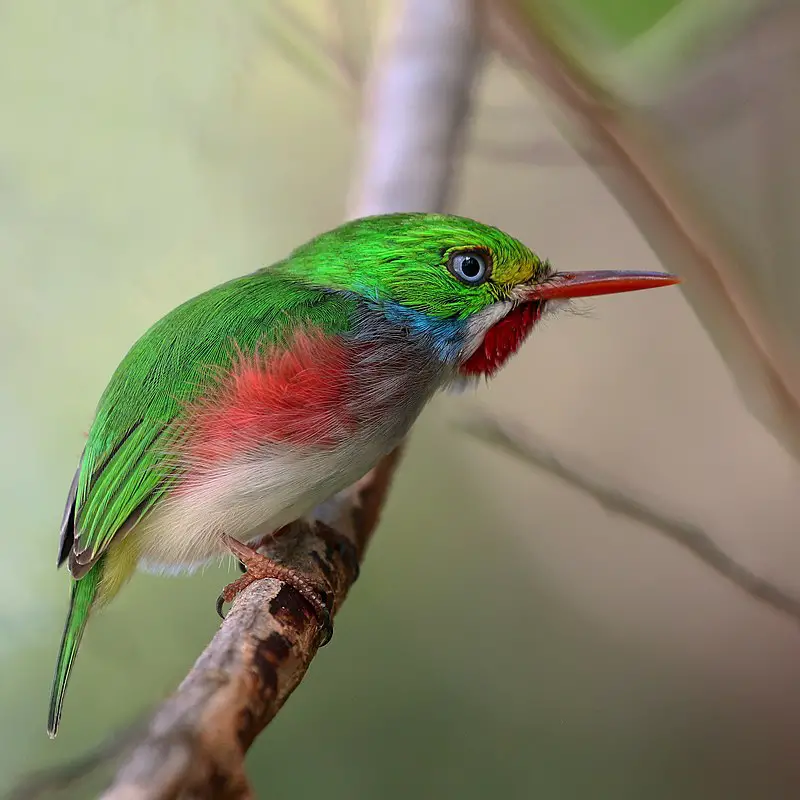
Tody birds are small yet stunningly beautiful Caribbean birds that belong to the Coraciiformes order, which also includes kingfishers, bee-eaters and rollers.
They make up the family Todidae with one living genus – Todus – and a fossilized genus called Palaeotodus.
The first classification of these birds was done by Mathurin Jacques Brisson in 1760 who placed them in their own distinct genus; they were originally part of Alcedo (the kingfisher).
These tiny beauties have bright green bodies with white bellies, black heads capped with red or orange feathers depending on species, short tails and yellow legs.
They live mainly in forests but will sometimes venture out into open meadows where they can be seen hunting insects like most other hummingbirds do.
Scientific classification:
| Kingdom | Animalia |
| Phylum | Chordata |
| Class | Aves |
| Order | Coraciiformes |
| Family | Todidae Vigors, 1825 |
26. Tyrant Flycatchers
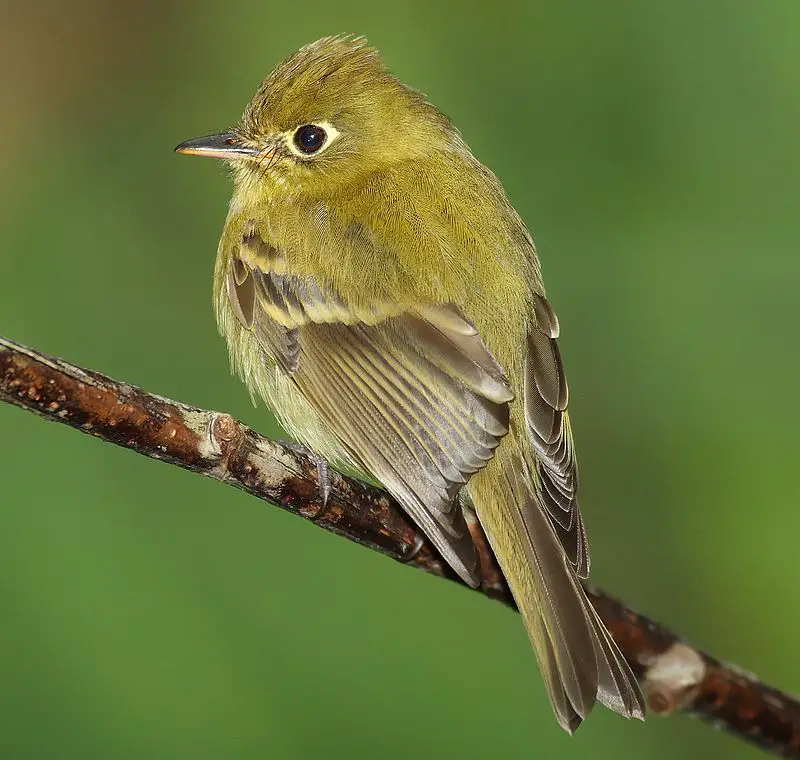
Tyrant flycatchers are a family of birds found in North and South America, containing over 400 species. These birds come in an array of shapes and sizes, with vibrant plumage to match.
They�re the most diverse avian family across all countries they inhabit except for the United States and Canada.
Their diet consists mainly of insects but also includes small reptiles or amphibians where available.
The behavior varies between each bird; some prefer open areas while others like dense forests as their habitat � many even migrate regularly.
Tyrant Flycatchers have adapted well to human presence thanks to the abundance of food sources that often accompany it � such as backyards, parks etc..
All things considered these incredible creatures are truly amazing.
Scientific classification:
| Kingdom | Animalia |
| Phylum | Chordata |
| Class | Aves |
| Order | Passeriformes |
| Parvorder | Tyrannida |
| Family | Tyrannidae Vigors, 1825 |
27. Jamaican Oriole
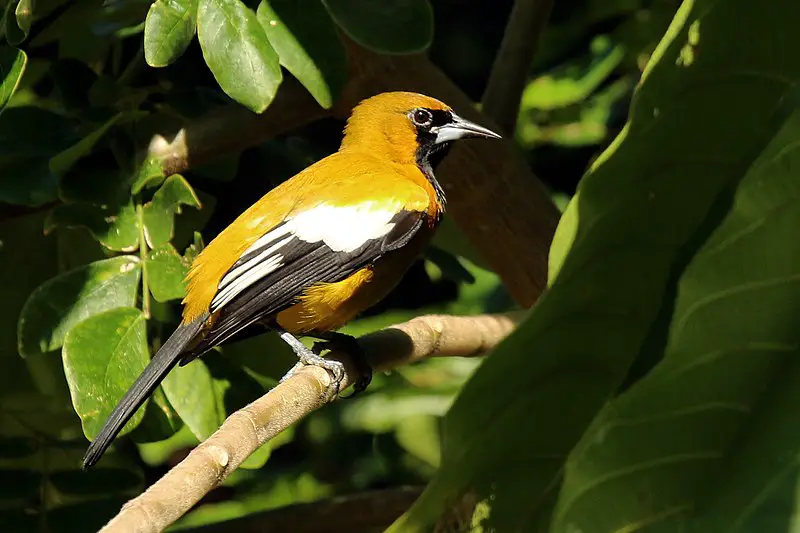
The Jamaican oriole is a species of bird found in Jamaica and the Colombian island of San Andrés.
It belongs to the family Icteridae, making it more closely related to North American mainland orioles such as Baltimore Orioles.
This species was once present on Grand Cayman Island but has since become extinct there, resulting in its extirpation from that area.
The Jamaican Oriole has brightly-colored plumage with black upperparts and wings and yellow chin, throat and breast feathers; their tail feathers are white edged with black stripes.
They can be heard singing loud melodic songs during breeding season which occurs between March – June each year.
Scientific classification:
| Kingdom | Animalia |
| Phylum | Chordata |
| Class | Aves |
| Order | Passeriformes |
| Family | Icteridae |
| Genus | Icterus |
| Species | I. leucopteryx |
28. Olive-Throated Parakeet
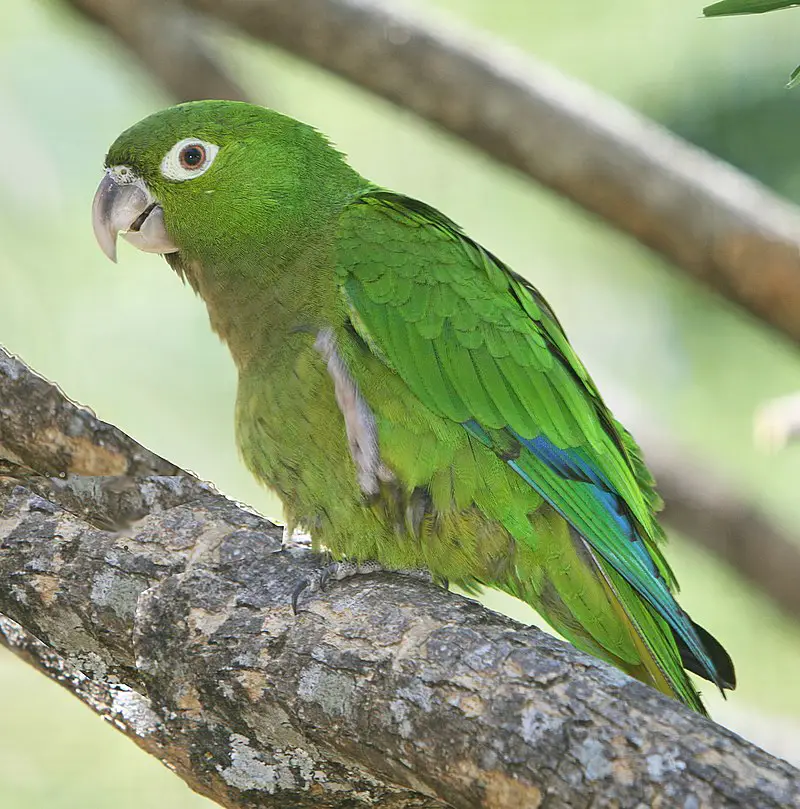
Olive-throated parakeets are native to Jamaica, Mexico and Central America. They have been introduced to Hispaniola in the Dominican Republic as well.
These birds feature a brown throat with orange eyes in adults and brown eyes in juveniles.
When they take flight their call is distinctive – high pitched chirps that sound like “wee-cheee”.
Olive-throated parakeets live primarily in forests or woodlands but can also be found around agricultural areas such as farms where there is plenty of food available for them to eat.
The diet of these birds consists mainly of fruits, seeds, nuts and flowers from plants though they will occasionally feed on insects too.
They form tight bonds with one another which helps protect against predators when living together in flocks and keeps their social structure strong within these groups.
Scientific classification:
| Kingdom | Animalia |
| Phylum | Chordata |
| Class | Aves |
| Order | Psittaciformes |
| Family | Psittacidae |
| Genus | Eupsittula |
| Species | E. nana |
Also Featured In: Birds That You’ll Find in Hispaniola,
29. Shorebirds
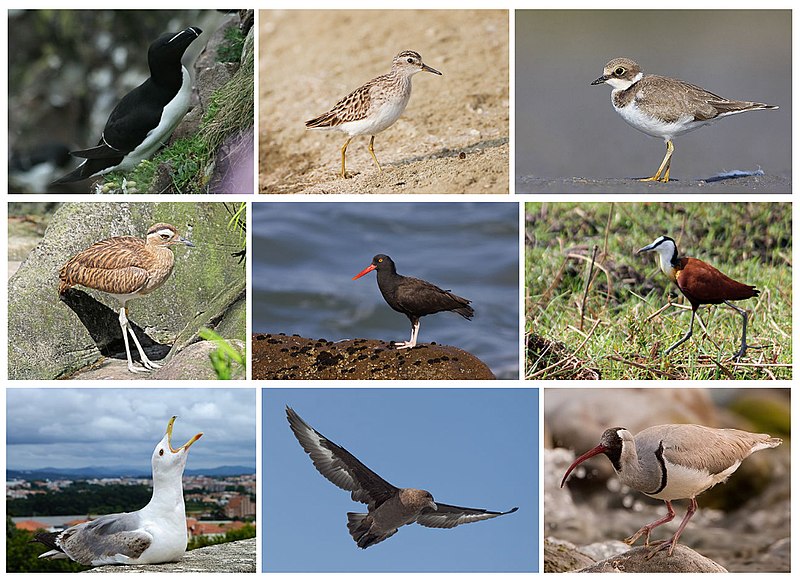
Shorebirds, a diverse group of birds in the Charadriiformes order, are found near water on every continent except Antarctica.
These small to medium-sized birds feed mainly on invertebrates and other small animals but can also be pelagic seabirds or inhabit deserts.
Shorebirds use their long bills to probe mudflats for food like worms and mollusks while some species plunge into the ocean’s depths in search of crustaceans such as crabs and shrimp.
They have strong legs equipped with webbed feet which allow them to move quickly when searching for prey across wetlands, sandbars, beaches and swamps.
Their feathers make them well adapted to life by land or sea due to its hydrophobic nature which helps reduce drag during swimming or flying through windy conditions making it easier for shorebirds survive tough environments around the world.
Scientific classification:
| Kingdom | Animalia |
| Phylum | Chordata |
| Class | Aves |
| Infraclass | Neognathae |
| Clade | Neoaves |
| Clade | Gruimorphae |
| Order | Charadriiformes Huxley, 1867 |
30. Tanagers
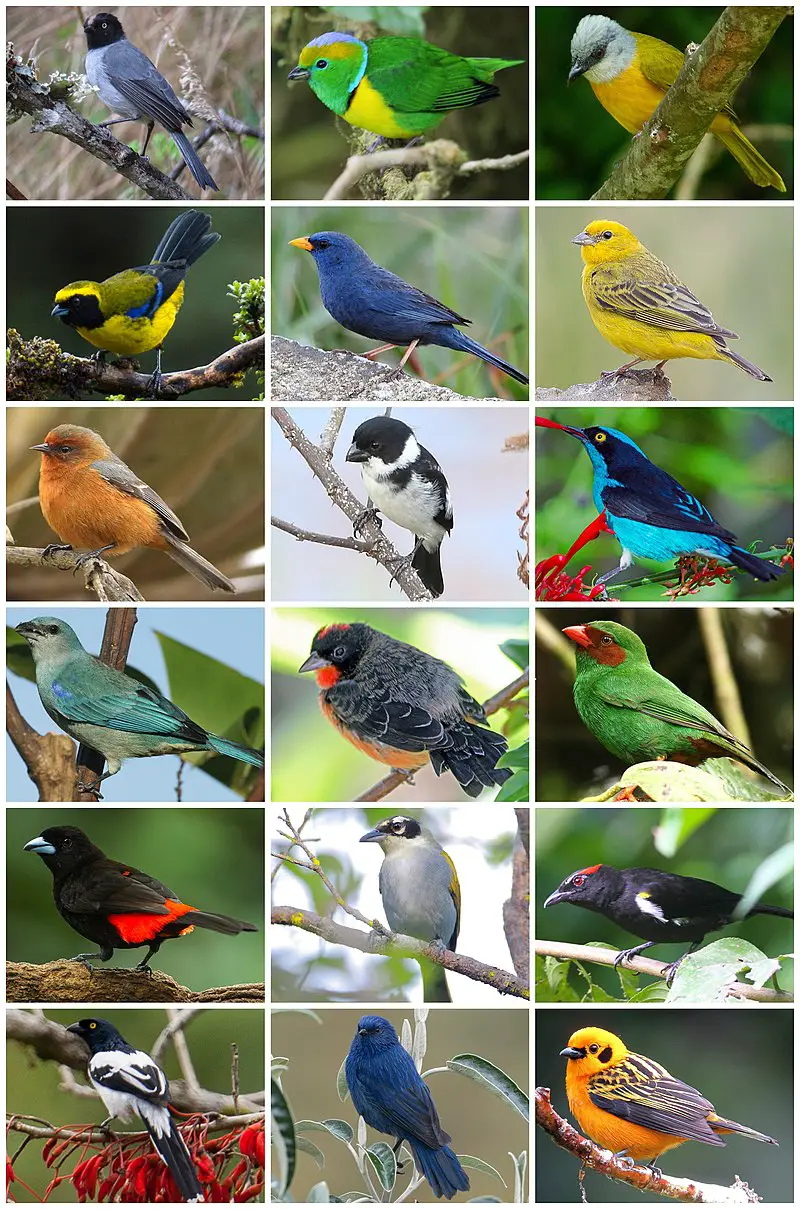
The Tanagers are a beautiful and diverse family of birds native to the Neotropical region. They boast an impressive array of colors, including blues, greens, yellows and reds.
The most common type is the fruit-eating tanager that can be found in tropical forests across Latin America. With nearly 240 species worldwide, they represent almost 4% of all avian species.
These vibrant birds have adapted well to their environment due to their strong bills used for cracking open hard fruits as well as sharp claws for gripping branches while feeding or perching.
As with many other bird families there is natural variation among populations making each one unique in its own way; something that makes them even more special.
Scientific classification:
| Kingdom | Animalia |
| Phylum | Chordata |
| Class | Aves |
| Order | Passeriformes |
| Superfamily | Emberizoidea |
| Family | Thraupidae Cabanis, 1847 |
31. Waxwing Birds
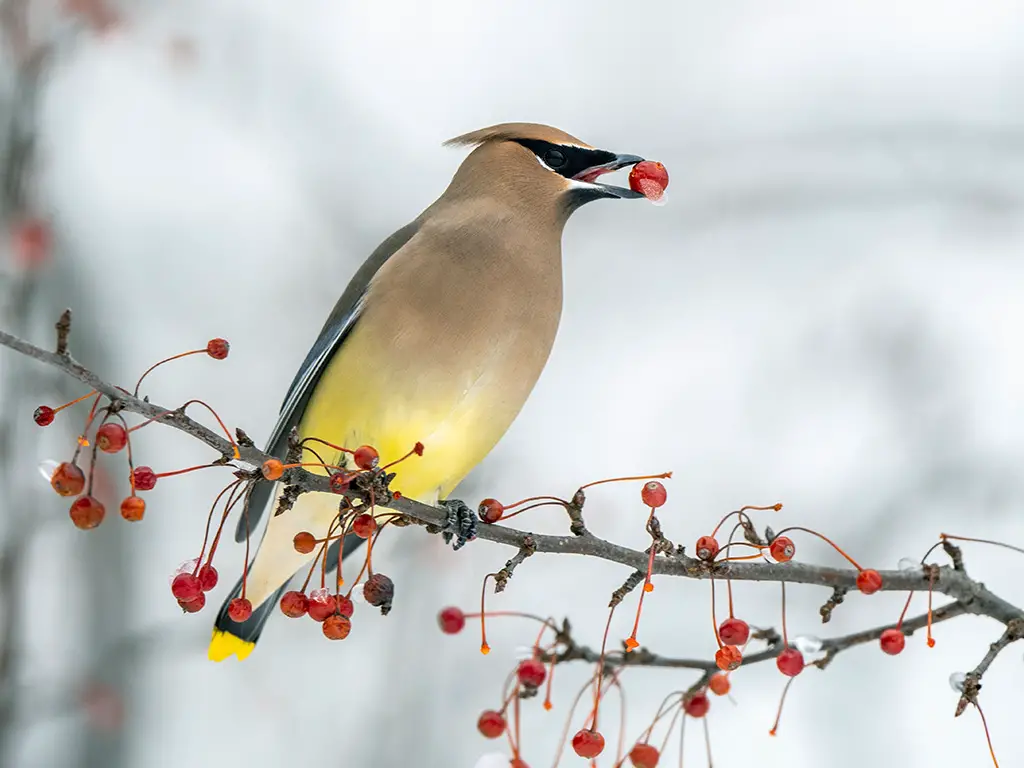
The Jamaican tody is an endemic bird of Jamaica. It has a bright yellow-green body and red throat patch, with a black crown on its head that extends down to the nape of its neck.
Its wings are short and rounded, while it’s tail is long and pointed.
The diet consists mainly of insects such as beetles, caterpillars, grasshoppers which they catch by hovering in midair over their prey before diving swiftly towards them.
They also consume small amounts of fruit when available during certain times throughout the year.
These tiny birds typically breed between April and October each year where pairs make shallow saucer shaped nests out of plant material close to ground level or low trees near water sources such as streams or rivers for easy access to food sources for both parents and chicks alike.
32. Regulidae
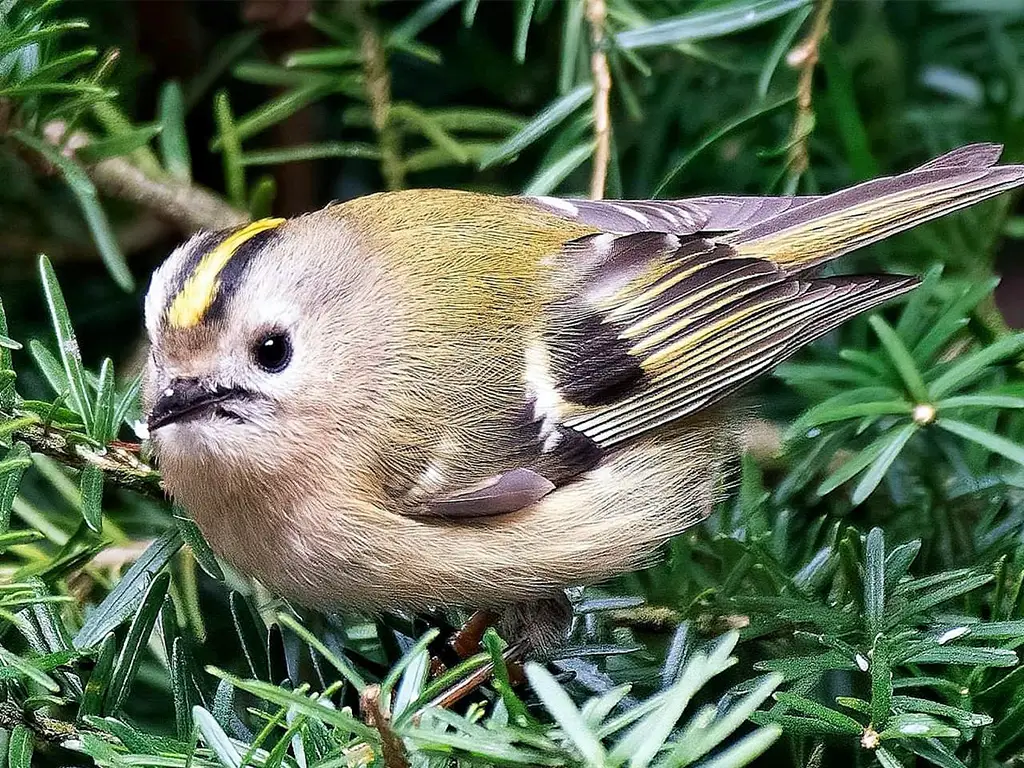
The Jamaican tody is an endemic bird of Jamaica. It has a bright yellow-green body and red throat patch, with a black crown on its head that extends down to the nape of its neck.
Its wings are short and rounded, while it’s tail is long and pointed.
The diet consists mainly of insects such as beetles, caterpillars, grasshoppers which they catch by hovering in midair over their prey before diving swiftly towards them.
They also consume small amounts of fruit when available during certain times throughout the year.
These tiny birds typically breed between April and October each year where pairs make shallow saucer shaped nests out of plant material close to ground level or low trees near water sources such as streams or rivers for easy access to food sources for both parents and chicks alike.
33. Motacillidae
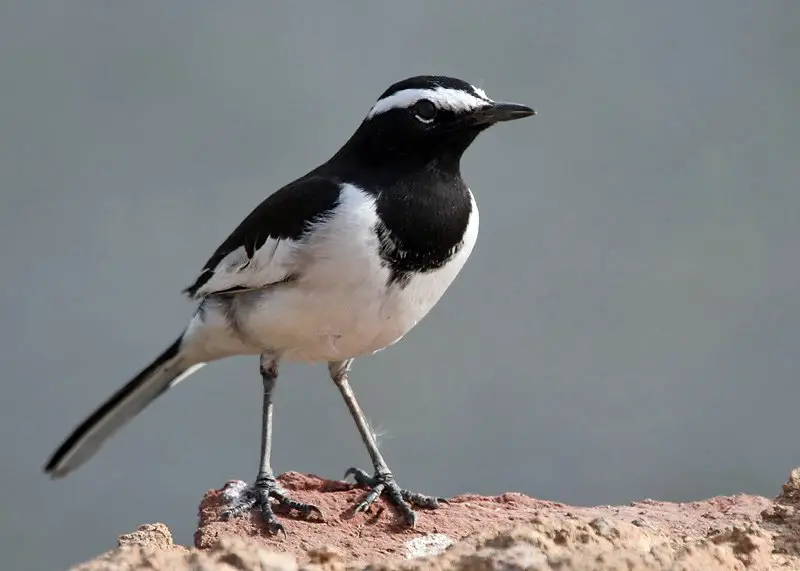
Motacillidae is a family of small passerine birds consisting of around 70 species. They are found across Europe, Africa, Asia and even Alaska with two migratory breeding species.
The three genera they belong to include wagtails which typically have medium to long tails; longclaws that can only be spotted in the Afrotropics; and pipits which possess the most cosmopolitan distribution worldwide.
These birds feed on insects as well as seeds for their diets and are usually seen in open habitats such grasslands or wetlands where food sources like invertebrates can easily be accessed.
Most Motacillidae species also use mud nests during breeding season making them easy targets for predators so it’s important we protect these beautiful creatures.
Scientific classification:
| Kingdom | Animalia |
| Phylum | Chordata |
| Class | Aves |
| Order | Passeriformes |
| Superfamily | Passeroidea |
| Family | Motacillidae Horsfield, 1821 |
34. Mimid
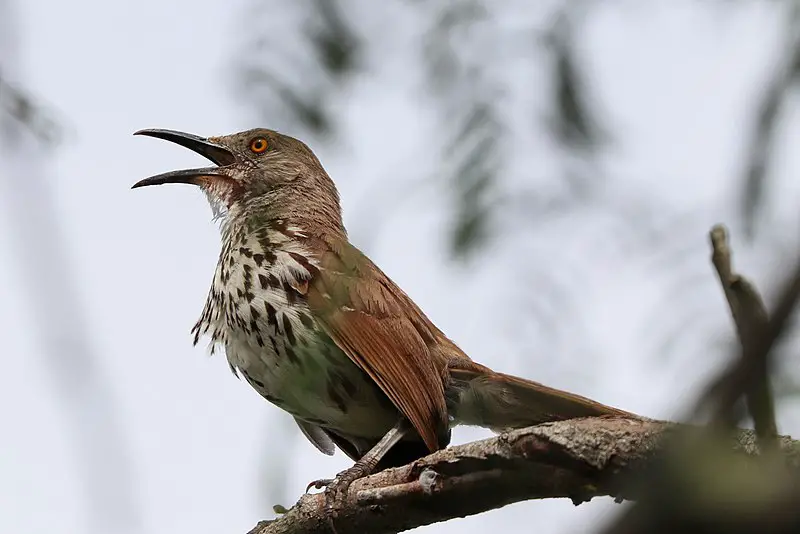
Mimid birds are a diverse family of passerines found in the New World. They have an impressive vocal range and many species excel at mimicking other bird songs, as well as noises from their environment.
Mimids can be identified by their flat heads with short crest feathers, long tails, large eyes and strong legs for hopping between branches.
These birds typically inhabit open woodlands or scrubland areas where they feed on insects such as beetles, caterpillars and grasshoppers.
Some species also supplement their diet with fruits or grains when available. While most do not migrate far during winter months some may undertake longer migrations to warmer climates if necessary to survive cold weather spells.
The wide variety of sounds these talented singers produce make them one of nature’s great musical performers.
Scientific classification:
| Kingdom | Animalia |
| Phylum | Chordata |
| Class | Aves |
| Order | Passeriformes |
| Superfamily | Muscicapoidea |
| Family | Mimidae Bonaparte, 1853 |
35. Weavers
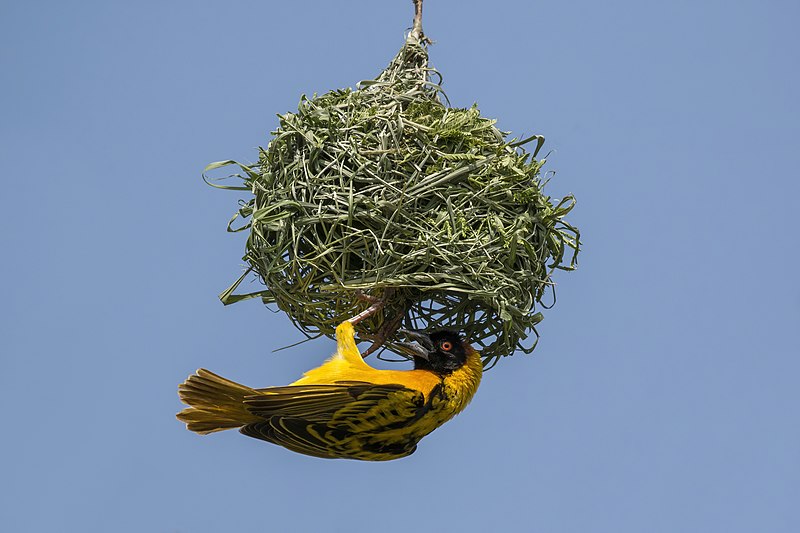
Weaver birds are small passerine birds found in the family Ploceidae. They are known for their intricately woven nests, made from vegetation and other materials sourced locally by the weavers.
These complex structures have earned them their distinctive name, as they appear to weave together a home away from home.
Weaverbirds come in a range of sizes and colours – some are brightly coloured while others may be more subtle or plainer looking – but all share an affinity with weaving material into intricate architectural designs.
Some species also use mud instead of plant life to build these impressive homes. Not only do these feathered architects give us insight into nature’s incredible capacity for problem-solving and resourcefulness; they provide stunningly colourful displays too.
Scientific classification:
| Kingdom | Animalia |
| Phylum | Chordata |
| Class | Aves |
| Order | Passeriformes |
| Superfamily | Passeroidea |
| Family | Ploceidae Sundevall, 1836 |
36. Yellow-Breasted Chat
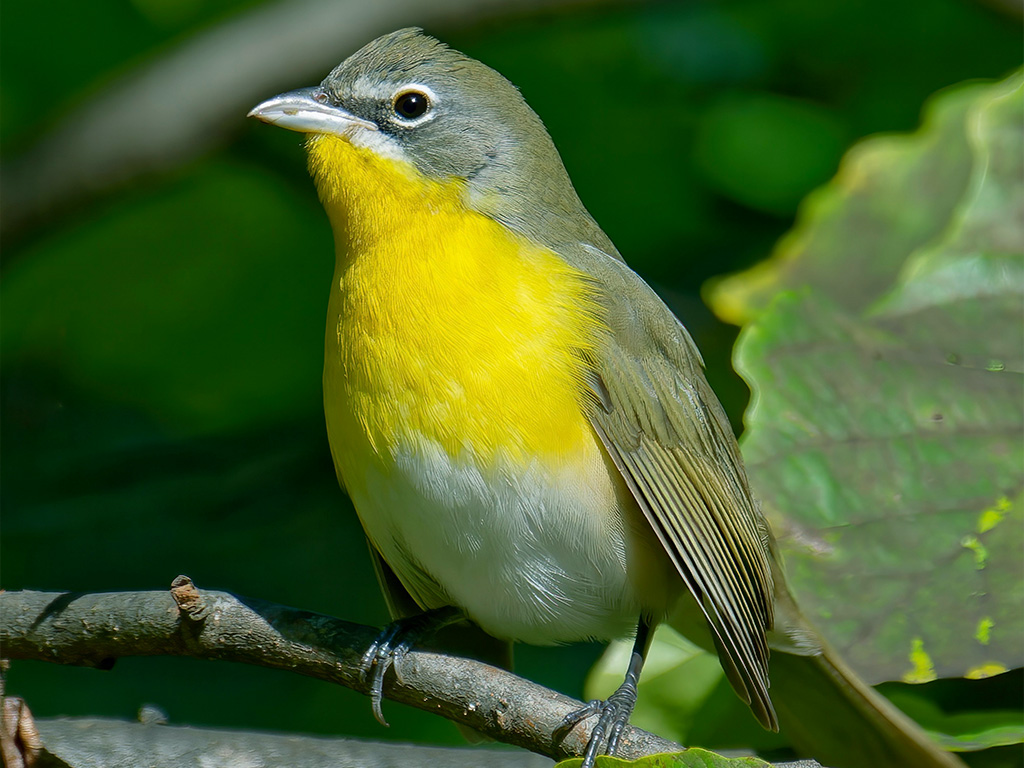
The Yellow-breasted Chat is a large songbird found in North America, and is the only member of its family Icteriidae.
It was once part of the New World Warbler family but has since been moved to its own group due to taxonomic uncertainty.
This bird stands out as it was previously thought to be the largest species within Parulida.
Its plumage features shades of yellow, olive green and browns; males have darker heads while females are slightly paler overall.
The chat’s diet consists mostly of insects such as caterpillars and beetles which they forage from low vegetation or glean off leaves on tree branches during summer months when their populations peak.
They also feed heavily on fruits like elderberry, grapes and wild cherries during migration periods throughout spring/fall season providing much needed energy for long journeys southwards or northwards depending upon geography location each year.
Scientific classification:
| Kingdom | Animalia |
| Phylum | Chordata |
| Class | Aves |
| Order | Passeriformes |
| Superfamily | Emberizoidea |
| Family | Icteriidae Baird, 1858 |
| Genus | Icteria Vieillot, 1808 |
| Species | I. virens |
37. Euphonias
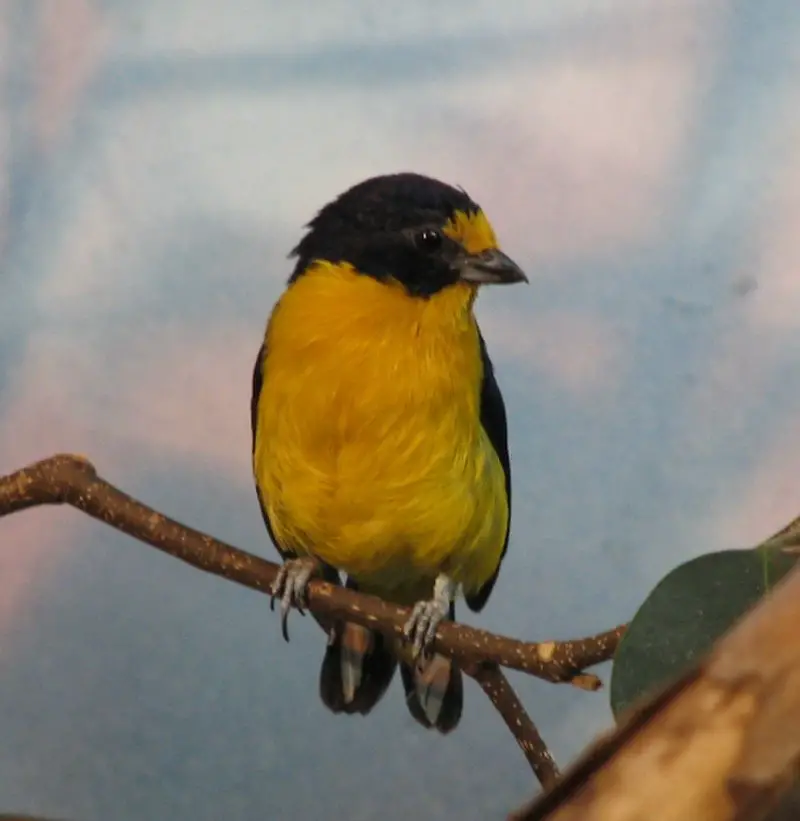
Euphonias are a beautiful species of bird that inhabit the Neotropical region. They belong to the finch family and have a melodious song, which is where their name comes from; “euphonia” meaning sweet-voiced in Greek.
Males tend to be dark metallic blue on top with bright yellow undersides, while females are typically duller in colouration.
Despite being small birds they can make quite an impact with their distinct chorus and vibrant plumage.
This makes them perfect for any backyard garden or aviary as they add both sound and beauty to your outdoor space – what’s not to love?
Scientific classification:
| Kingdom | Animalia |
| Phylum | Chordata |
| Class | Aves |
| Order | Passeriformes |
| Family | Fringillidae |
| Subfamily | Euphoniinae |
| Genus | Euphonia Desmarest, 1806 |
Also Featured In: Birds that Live in Newfoundland and Labrador,
38. Northern Potoo
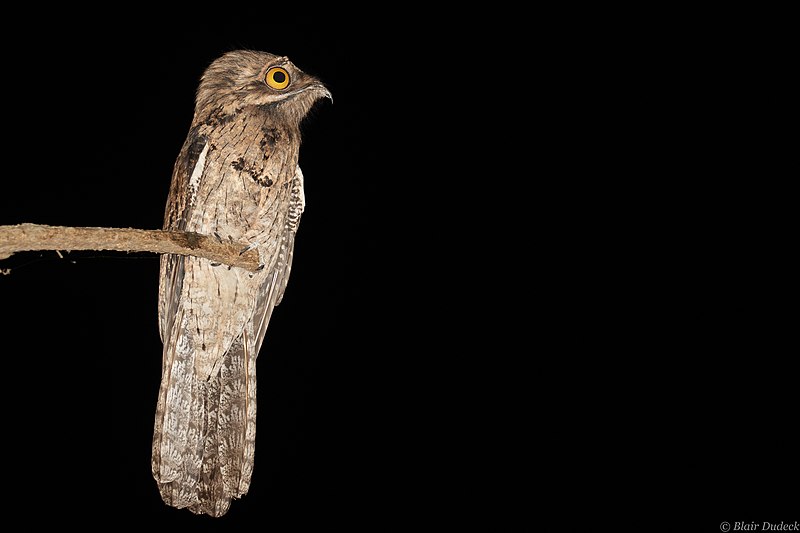
The Northern Potoo is a nocturnal bird belonging to the Nyctibiidae family. It inhabits Mexico, Central America and some of the Caribbean Islands such as Jamaica and Hispaniola where it can be found in tropical dry forests.
It was formerly classified as a subspecies of Common Potoo but due to differences in vocalizations they are now considered separate species.
This interesting bird has an almost comical appearance with its large head, long bill, short neck and disproportionately long legs that give it an awkward gait when walking on land.
Its plumage is mottled grey-brown which helps camouflage itself during the day while perched motionless on tree branches looking for prey at night.
The Northern Potoos call consists mostly or whistles ending with trills making them quite easy to identify within their range area.
Scientific classification:
| Kingdom | Animalia |
| Phylum | Chordata |
| Class | Aves |
| Order | Nyctibiiformes |
| Family | Nyctibiidae |
| Genus | Nyctibius |
| Species | N. jamaicensis |
39. Northern Jacana
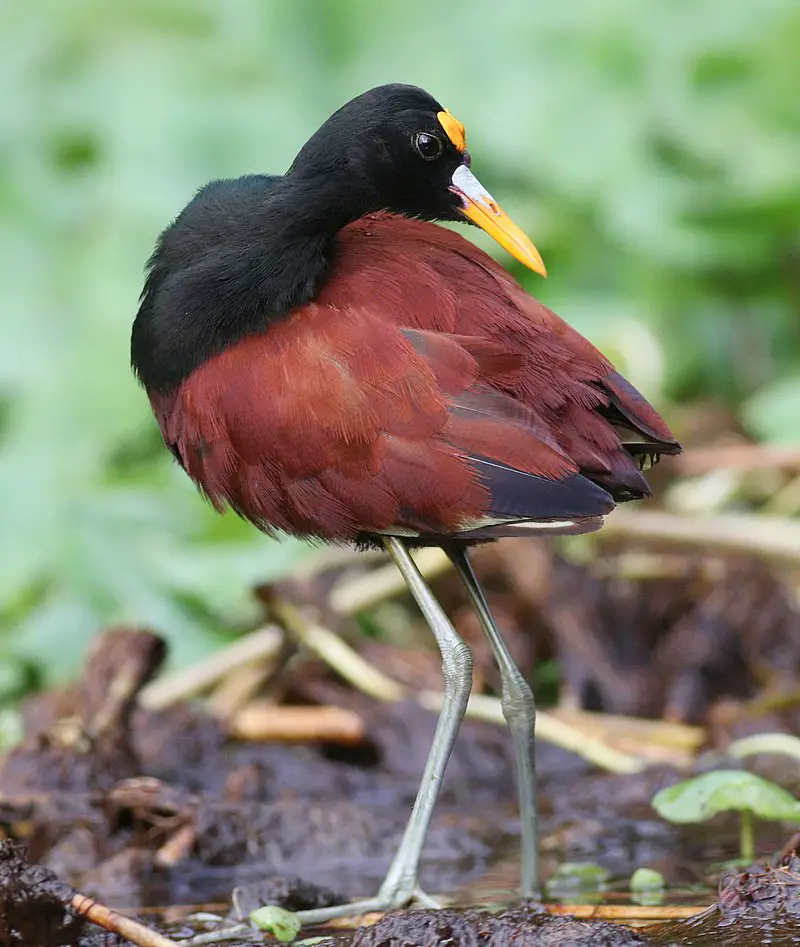
The Northern Jacana is a wading bird native to Mexico, Panama, Cuba, Jamaica and Hispaniola. It can also be found in Texas as a resident breeder or on rare occasions in Arizona as a vagrant.
This species of wetland birds are easily identified by their immense size and large feet with long toes that help them walk atop floating vegetation while searching for food.
Their upperparts have black feathers streaked with white whilst its underparts display brown plumage marked by yellowish spots near the wingtips.
They feed primarily on insects but will also eat other aquatic invertebrates like crustaceans or mollusks when available.
The female builds an untidy nest made from leaves close to water so she can quickly escape predators if needed.
Scientific classification:
| Kingdom | Animalia |
| Phylum | Chordata |
| Class | Aves |
| Order | Charadriiformes |
| Family | Jacanidae |
| Genus | Jacana |
| Species | J. spinosa |
40. Procellariidae
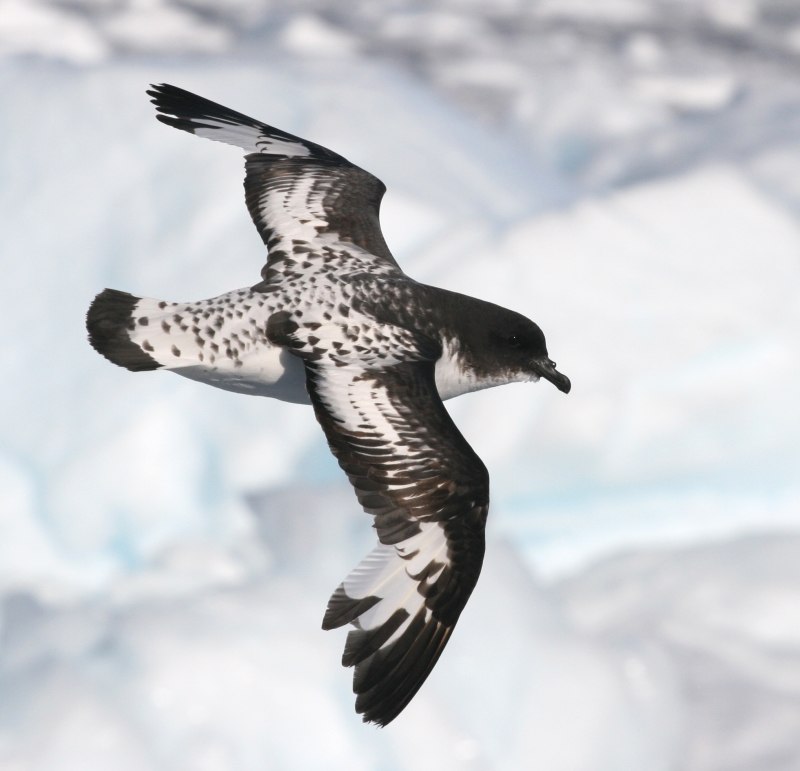
Procellariidae is a diverse family of seabirds belonging to the bird order Procellariiformes.
These birds are commonly referred to as tubenoses and include fulmarine petrels, gadfly petrels, diving petrels, prions, and shearwaters.
They range in size from the small storm-petrel which measures around 18cm long to the giant albatross which can reach up to 3 meters in length.
Generally found near oceans or coasts where they feed on fish as well as squid and other marine life depending on species.
Many procellariids will also nest inland during breeding season before returning back out at sea for most of their lives.
Their wings have specially adapted feathers that give them incredible gliding abilities allowing them literally fly with minimal effort over vast distances across oceanic regions.
Scientific classification:
| Kingdom | Animalia |
| Phylum | Chordata |
| Class | Aves |
| Order | Procellariiformes |
| Family | Procellariidae Leach, 1820 |
41. New World Sparrow
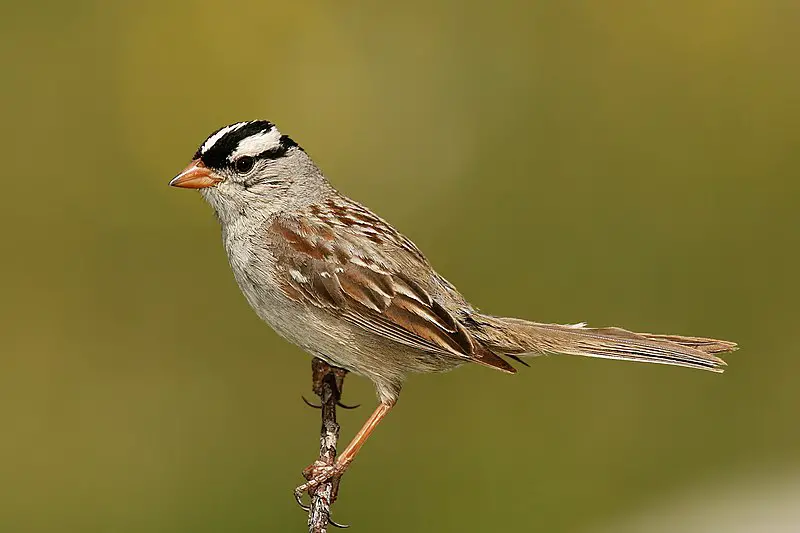
New World sparrows are passerine birds belonging to the family Passerellidae. They have conical bills, brown or grey plumage and many species have distinctive head patterns.
Though they share their name with Old World sparrows, they belong to a different family and are more closely related to buntings from the Old World.
These birds mainly feed on seeds but some of them also eat insects and fruits for nutrition.
New world sparrows inhabit open woodlands in North America as well as Central America, South America and even parts of Asia like Siberia.
They build cup-shaped nests using grasses, twigs and other materials found near by their habitats.
A few popular species include Dark eyed Junco (Junco hyemalis), White throated Sparrow (Zonotrichia albicollis)and Chipping Sparrow (Spizella passerina).
Scientific classification:
| Kingdom | Animalia |
| Phylum | Chordata |
| Class | Aves |
| Order | Passeriformes |
| Superfamily | Emberizoidea |
| Family | Passerellidae Cabanis, 1851 |
42. Jacanas
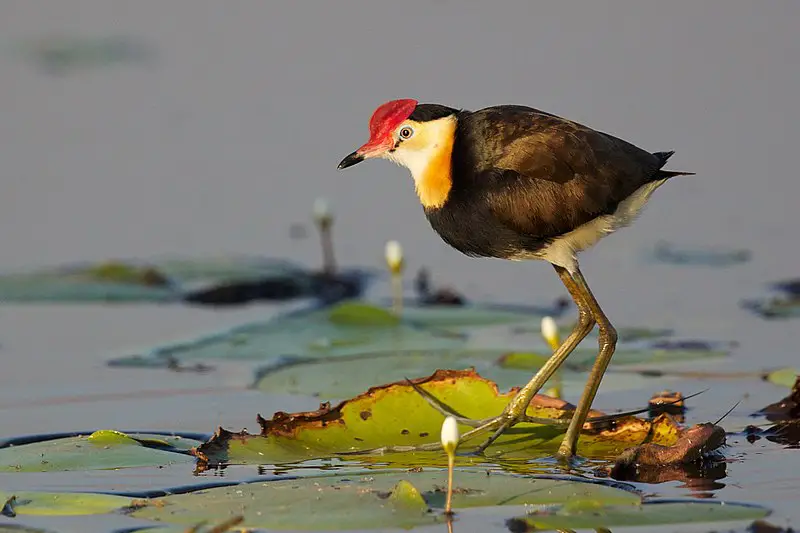
Jacanas are tropical waders belonging to the Jacanidae family. They have distinctive elongated toes and toenails which help them forage on floating or semi-emergent aquatic vegetation.
This adaptation gives them their nickname “Jesus birds” as they seem to be able to walk on water.
The female jacanas are also unique amongst bird species in that they take charge of nest building, incubation and caring for young while males perform courtship displays.
These unusual birds can be found throughout the world’s tropical regions where they inhabit wetlands such as swamps, marshes and shallow lakes with lily pads.
With a wide variety range due their special adaptations these beautiful creatures will surely continue living life at ease around our planet’s warmest waters.
Scientific classification:
| Kingdom | Animalia |
| Phylum | Chordata |
| Class | Aves |
| Order | Charadriiformes |
| Suborder | Thinocori |
| Family | Jacanidae Stejneger, 1885 |
43. Threskiornithidae
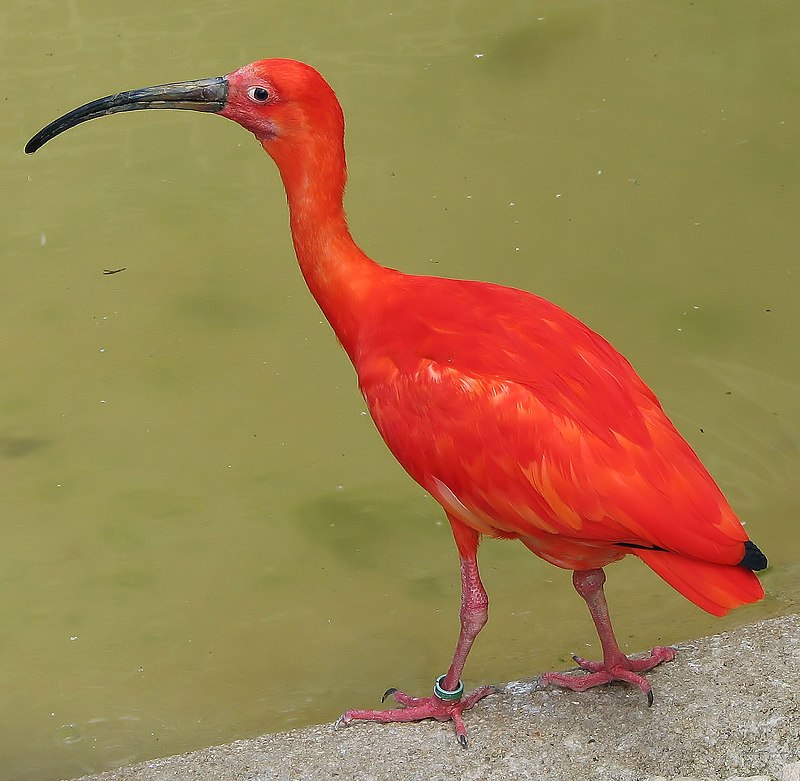
Threskiornithidae is a family of large wading birds which includes 36 species. These birds are traditionally divided into two subfamilies – the ibises and the spoonbills.
However, recent genetic analysis has shown that spoonbills actually belong to Old World ibis group, while New World ibises form an early offshoot from this lineage.
Threskiornithidse members have long curved beaks with serrated edges used for catching fish in shallow water or mudflats, as well as other aquatic invertebrates like crustaceans and mollusks.
They also feed on plant matter such as grains and seeds found close to wetlands areas where they live.
This diverse diet makes them important scavengers in their ecosystems, helping maintain healthy populations of native wildlife by controlling insect numbers and dispersing energy-rich seeds throughout wetland habitats.
Scientific classification:
| Kingdom | Animalia |
| Phylum | Chordata |
| Class | Aves |
| Order | Pelecaniformes |
| Suborder | Ardei |
| Family | Threskiornithidae Richmond, 1917 |
44. Northern Storm Petrels
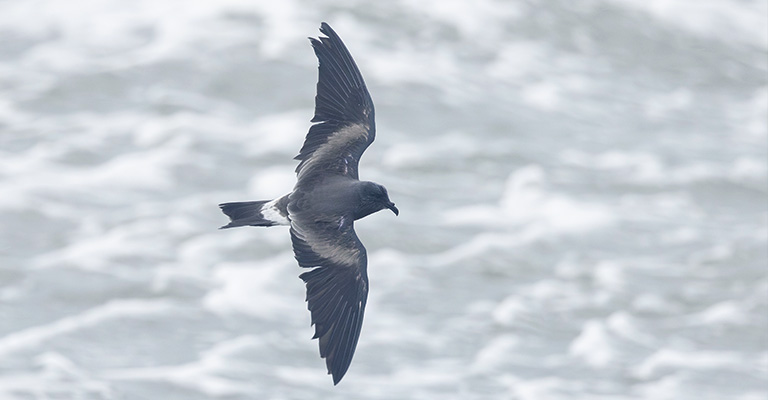
Northern storm petrels are one of the smallest seabirds, inhabiting oceans all over the world.
They have a unique ability to hover over water and pick planktonic crustaceans and small fish from the surface.
Northern storm petrels belong to the genus Hydrobates in family Hydrobatidae, part of Procellariiformes order.
This species was once lumped with austral storm petrel but recent studies show that they weren’t related closely which led them being split into two distinct species now.
These birds can be identified by their dark grey upperparts and wings along with white underparts when seen from afar while feeding on ocean’s surface.
Scientific classification:
| Kingdom | Animalia |
| Phylum | Chordata |
| Class | Aves |
| Order | Procellariiformes |
| Family | Hydrobatidae Mathews, 1912 |
| Genus | Hydrobates F. Boie, 1822 |
45. New World Quail
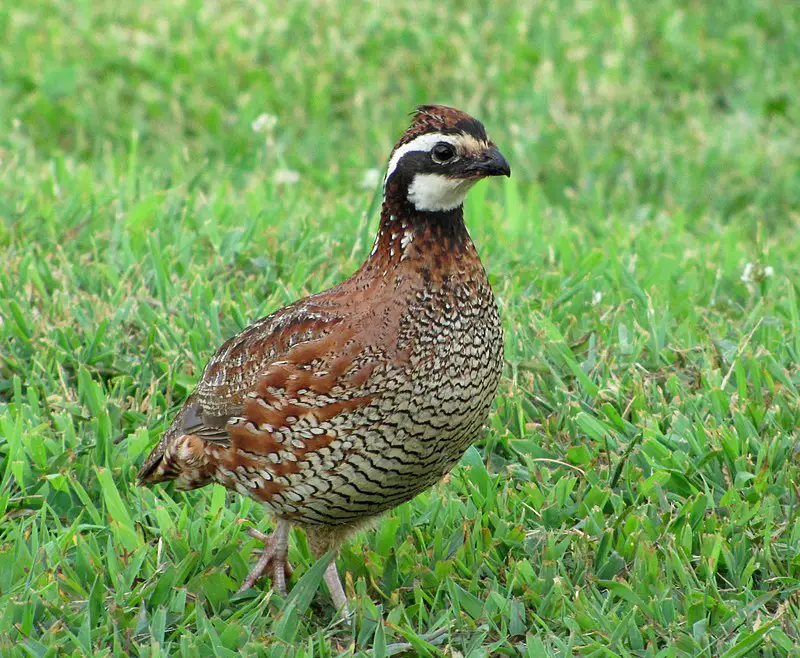
New World quail are small birds found in the Americas, from Canada to Brazil. They belong to their own family, Odontophoridae, and have similar appearance and habits as Old World quail which belong to a different family.
New World Quails come in various species such as California Quail and Bobwhite Quail.
These birds have adapted well to human presence due to availability of food resources like agricultural crops.
They also live close together where they form large flocks for safety against predators like foxes or hawks.
The males usually sport colorful feathers during mating season that helps them attract female mates while providing an amazing sight for us viewers.
Scientific classification:
| Kingdom | Animalia |
| Phylum | Chordata |
| Class | Aves |
| Order | Galliformes |
| Superfamily | Phasianoidea |
| Family | Odontophoridae Gould, 1844 |
46. Plovers

Plovers are a family of around 64-68 species of ground-dwelling birds, commonly found in open country such as fields, meadows and tundras.
They have short bills with webbed feet to help them forage through mud or shallow water.
Plover plumage is usually mottled brown though some species may have brighter colors on the head and wings.
These birds feed mainly on insects but can also eat small crustaceans and worms.
Plovers breed during springtime when they dig holes in sandy or pebbled beaches to lay their eggs which hatch after about 3 weeks incubation period.
They use distraction display behaviour by pretending an injury to the predators away from their nests if needed for protecting their young ones.
Scientific classification:
| Kingdom | Animalia |
| Phylum | Chordata |
| Class | Aves |
| Order | Charadriiformes |
| Family | Charadriidae Leach, 1820 |
47. Venezuelan Troupial
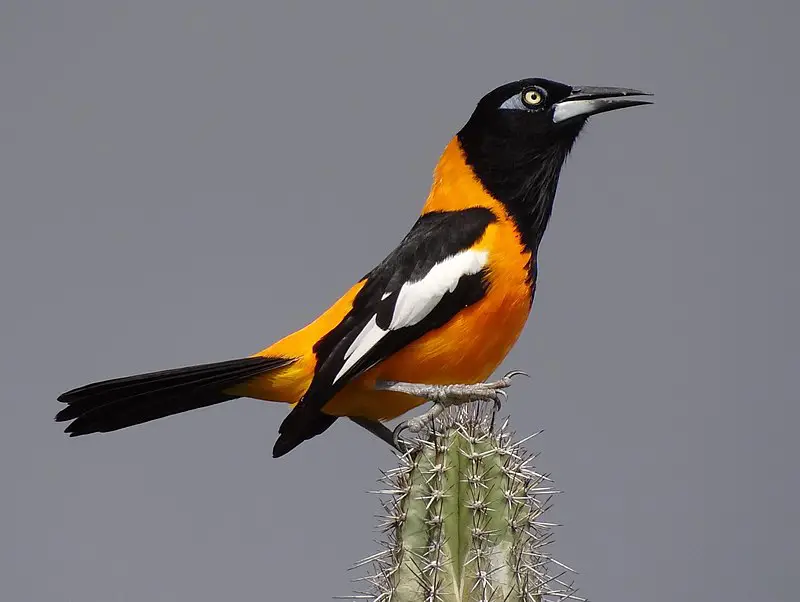
The Venezuelan troupial (Icterus icterus) is Venezuela’s national bird and can be found in Colombia, Venezuela and some Caribbean islands such as Aruba, Curaçao, Bonaire, Trinidad and Puerto Rico.
It was previously part of a superspecies known simply as the troupial with the orange-backed troupial and Campo troupial but has since been split off.
The name ‘troupial’ comes from French ‘toupiare’, which means “troop” due to their tendency to gather in flocks outside of breeding season.
They are medium sized birds with males being slightly larger than females – both have black bodies that contrast against a bright yellow head or crest.
Their wingspan averages at around 35cm long making them quite agile flyers when they migrate each year between November to April for warmer climates.
Scientific classification:
| Kingdom | Animalia |
| Phylum | Chordata |
| Class | Aves |
| Order | Passeriformes |
| Family | Icteridae |
| Genus | Icterus |
| Species | I. icterus |
48. Rufous-Throated Solitaire
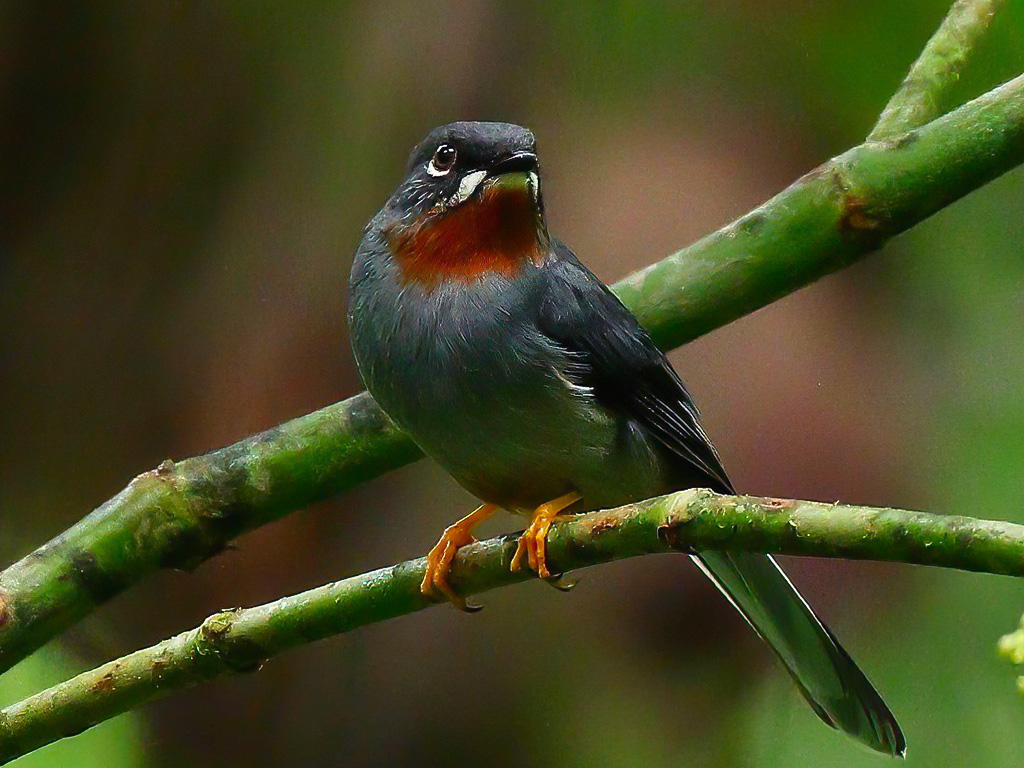
The Rufous-throated Solitaire is a species of bird belonging to the Turdidae family. It can be found in Dominican Republic, Haiti, Jamaica, Martinique and other Caribbean Islands with natural habitats including subtropical or tropical moist lowland forests and montane forests.
This beautiful medium sized songbird has unique characteristics like its greyish brown body colouration combined with an orangey throat that gives it its name; rufous-throated solitaire.
Besides being known by this name they are also nicknamed the ‘siffl’.
Unfortunately due to habitat destruction their population numbers have declined over recent years but conservation efforts are making some progress towards preserving these animals for future generations.
Scientific classification:
| Kingdom | Animalia |
| Phylum | Chordata |
| Class | Aves |
| Order | Passeriformes |
| Family | Turdidae |
| Genus | Myadestes |
| Species | M. genibarbis |
Also Featured In: Martinique Island Birds You Should Know,
49. Loggerhead Kingbird
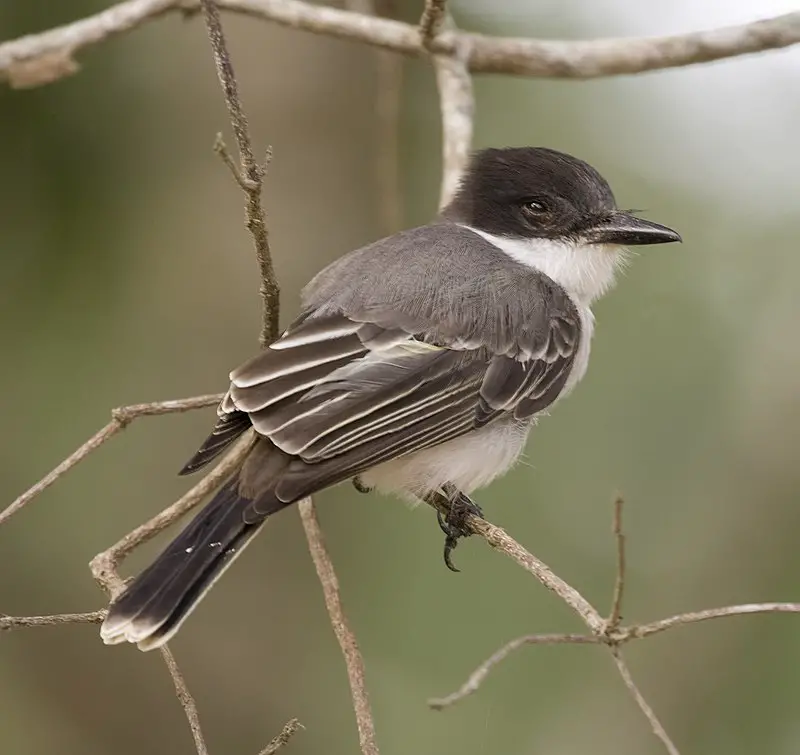
The Loggerhead Kingbird is a beautiful species of bird found in the West Indies, Bahamas, Cayman Islands, Cuba and Hispaniola. It prefers to inhabit subtropical or tropical moist lowland forests as well as montane forest habitats.
The kingbird has striking plumage with greyish-blue upperparts and bright yellow underparts. Its long tail feathers are darkly tipped which helps it stand out from other birds in its range.
This species feeds on insects such as beetles, grasshoppers and dragonflies that can be caught mid-air during its aerial forays.
Nesting season begins between February to May where they typically build their nests near riverside trees or shrubs and lay two eggs at once before incubating them for about 13 days till hatching occurs.
Although not yet threatened by extinction this shy creature should still be appreciated by all nature lovers who get lucky enough to observe one.
Scientific classification:
| Kingdom | Animalia |
| Phylum | Chordata |
| Class | Aves |
| Order | Passeriformes |
| Family | Tyrannidae |
| Genus | Tyrannus |
| Species | T. caudifasciatus |
50. Elaenia
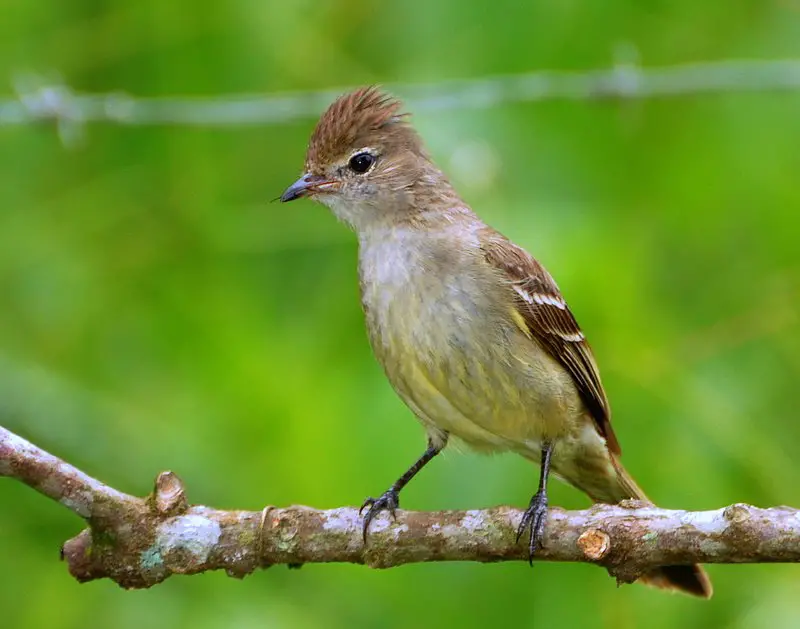
Elaenia is a genus of passerine birds in the tyrant flycatcher family that can be found all across Mexico, Central, and South America.
They are known for their common name elaenias which they share with similar species from the Myiopagis genus.
These bird’s identification is often difficult since many types look very alike. Elaenia flycatchers have distinct brows and short tails as well as soft sounding voices that help identify them better than external features.
They eat small insects such as flies and moths by catching them in mid-air or snatching them off tree leaves using their bill when perched on branches or trees nearby making it easier to catch prey quickly without flying too far away from its spot .
Scientific classification:
| Kingdom | Animalia |
| Phylum | Chordata |
| Class | Aves |
| Order | Passeriformes |
| Family | Tyrannidae |
| Genus | Elaenia Sundevall, 1836 |